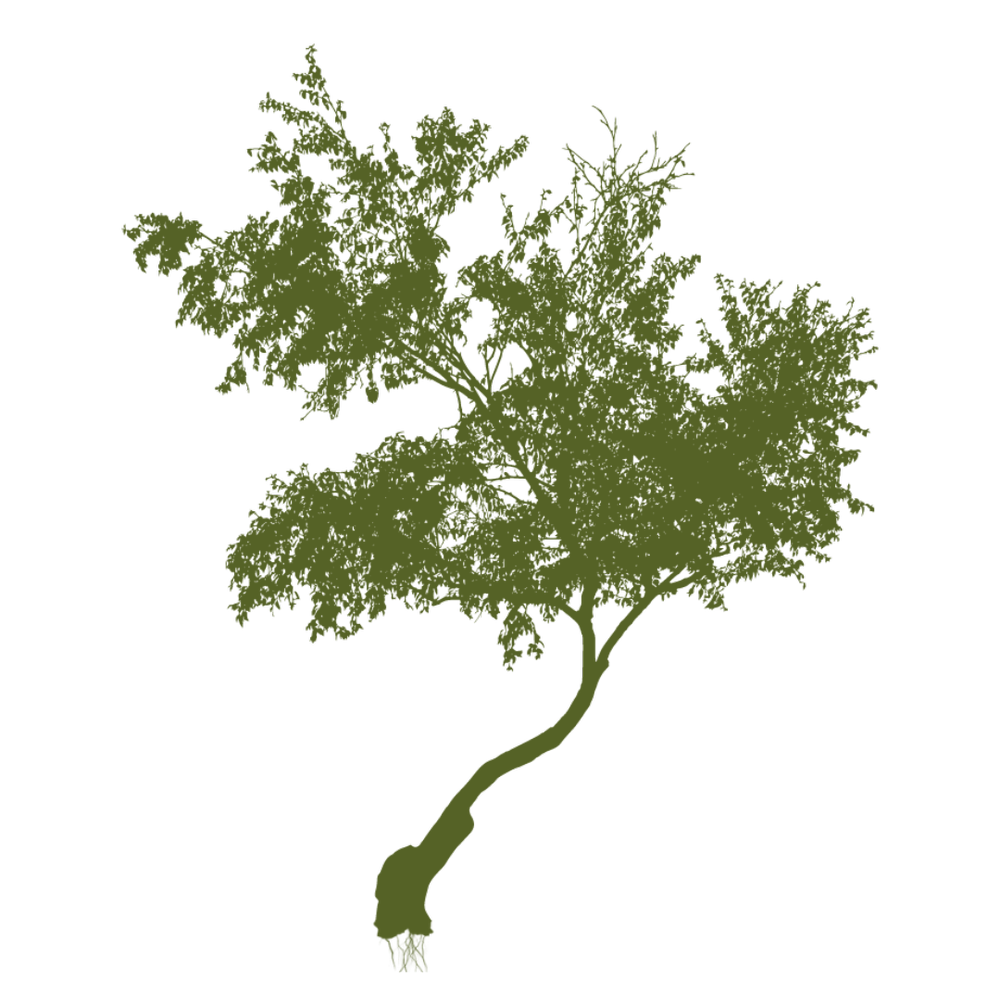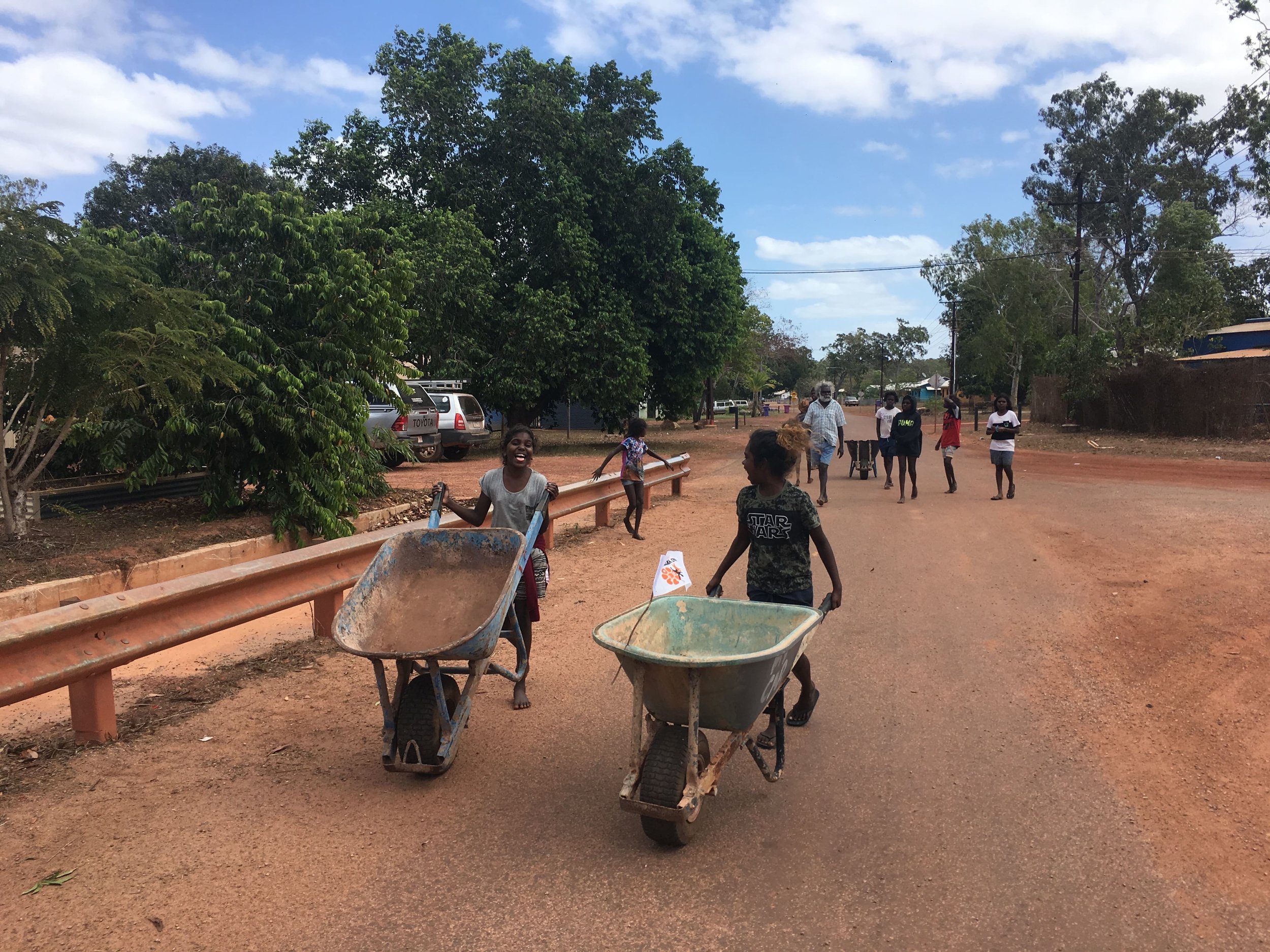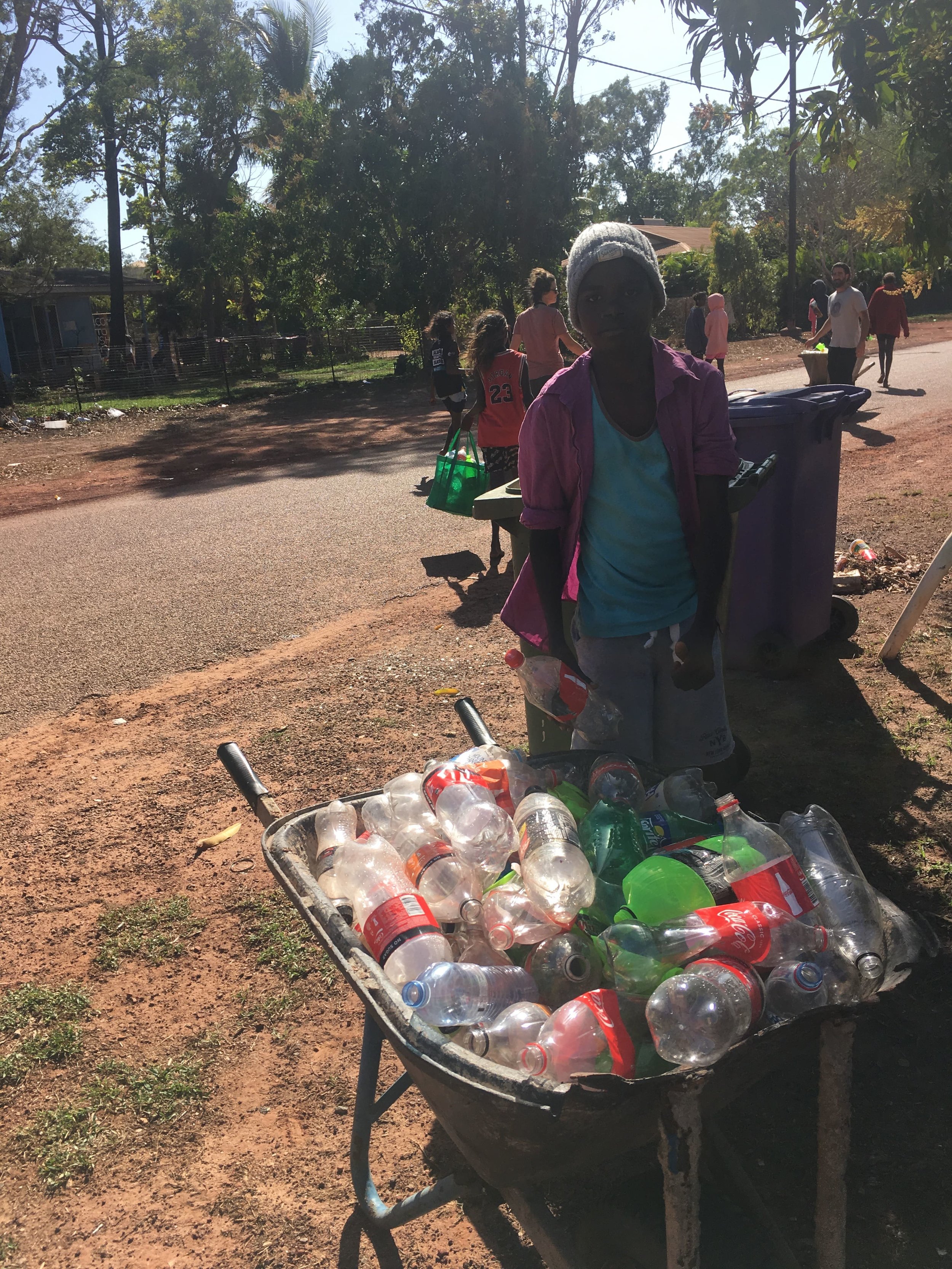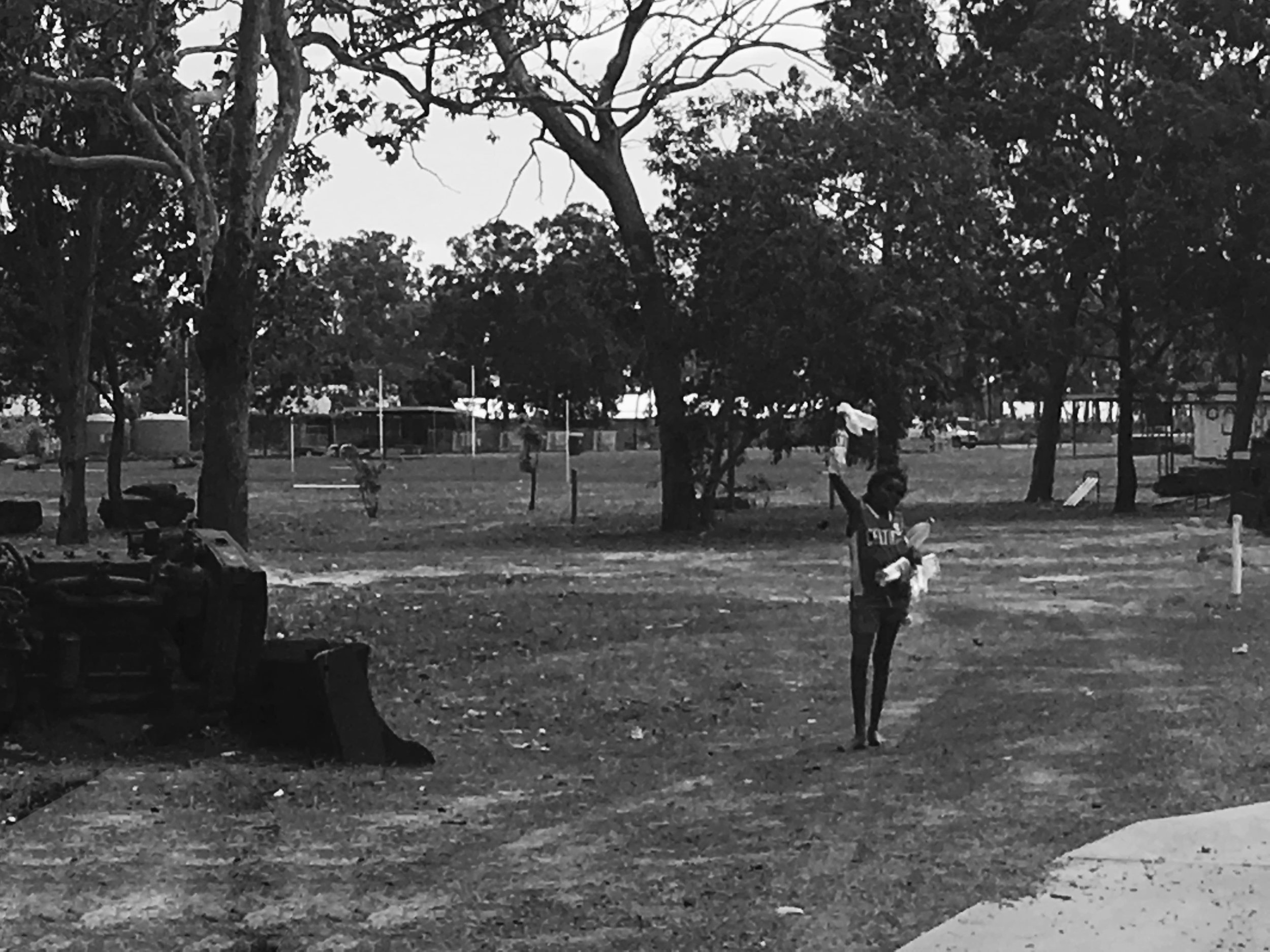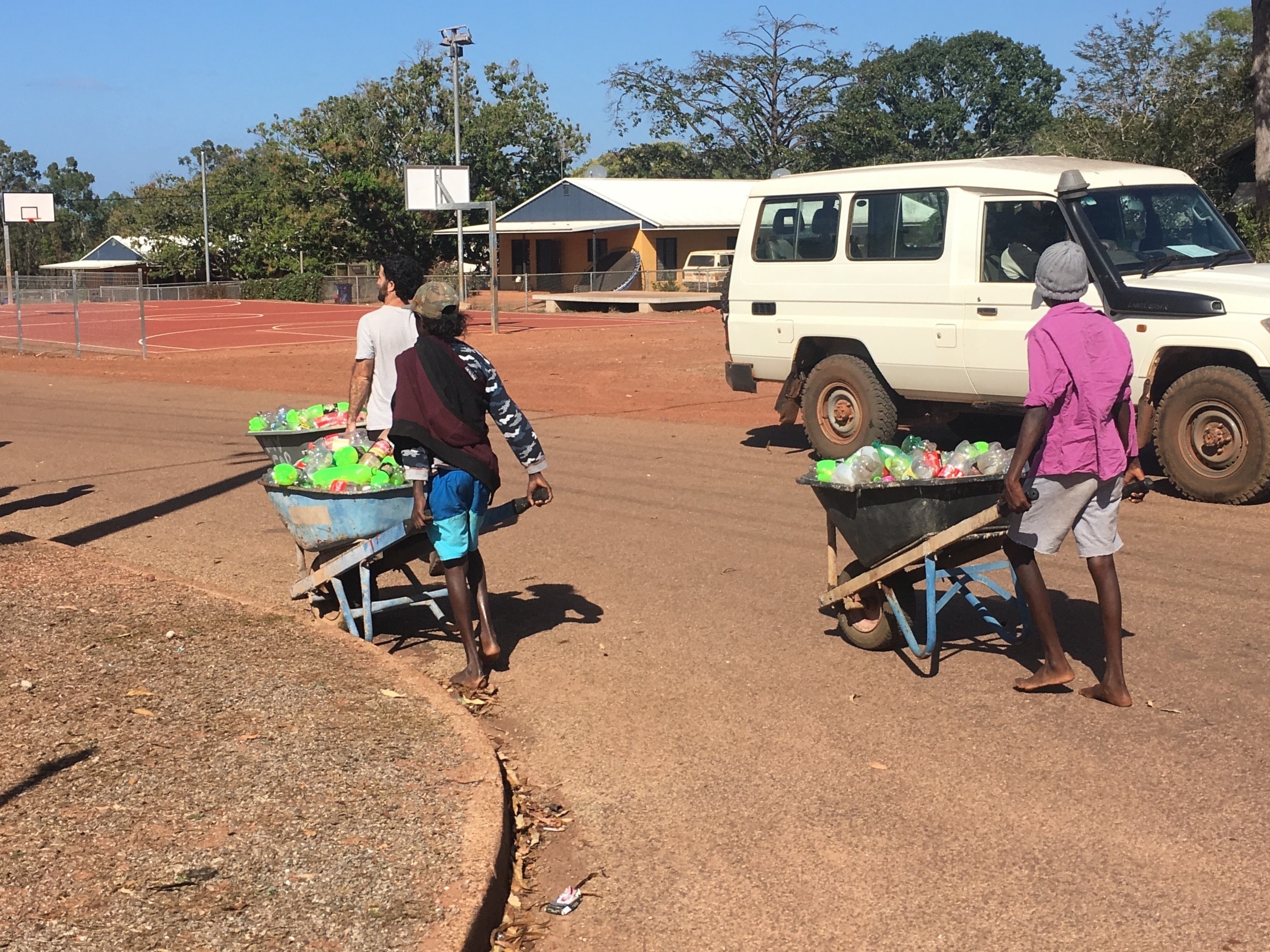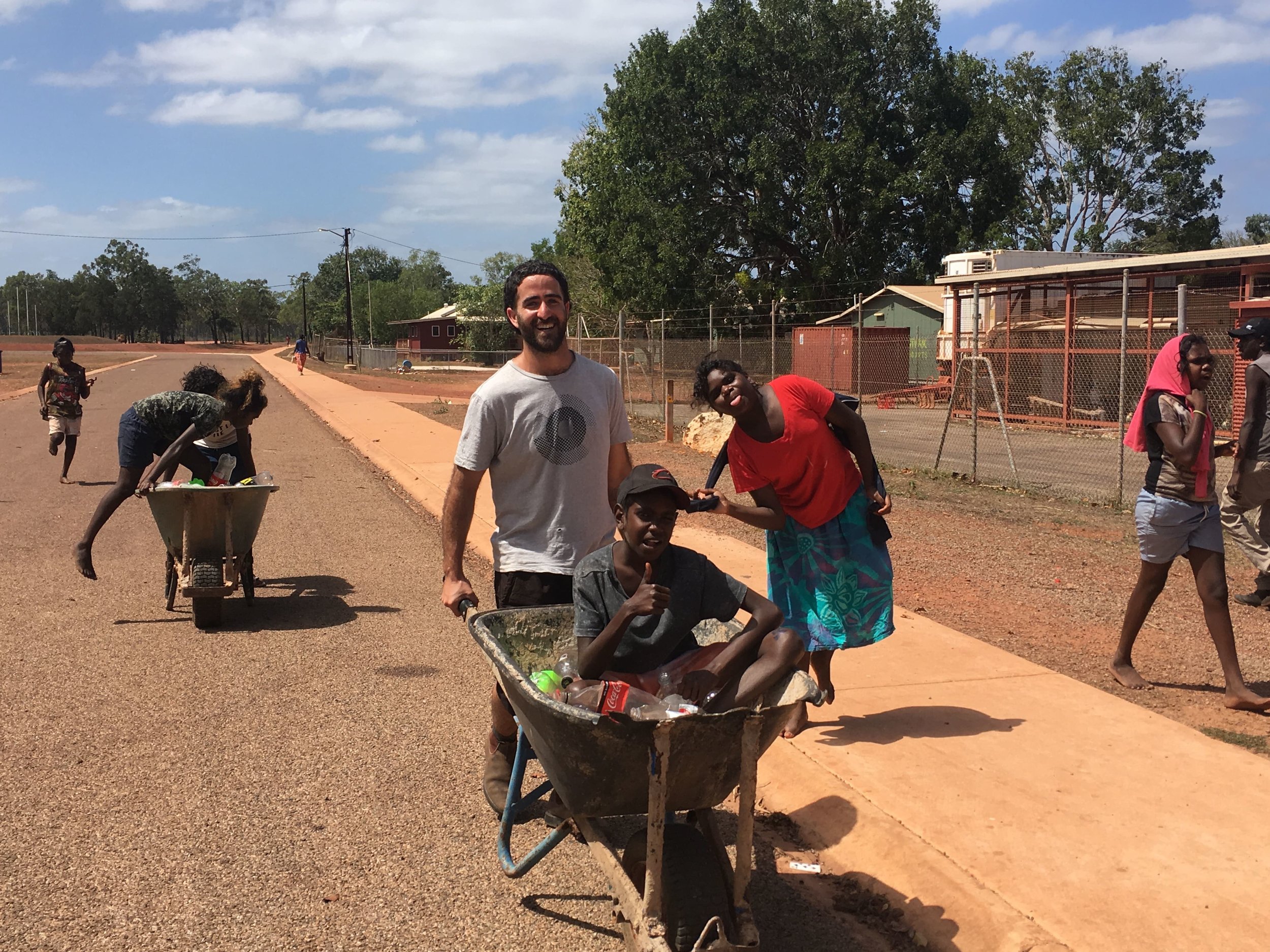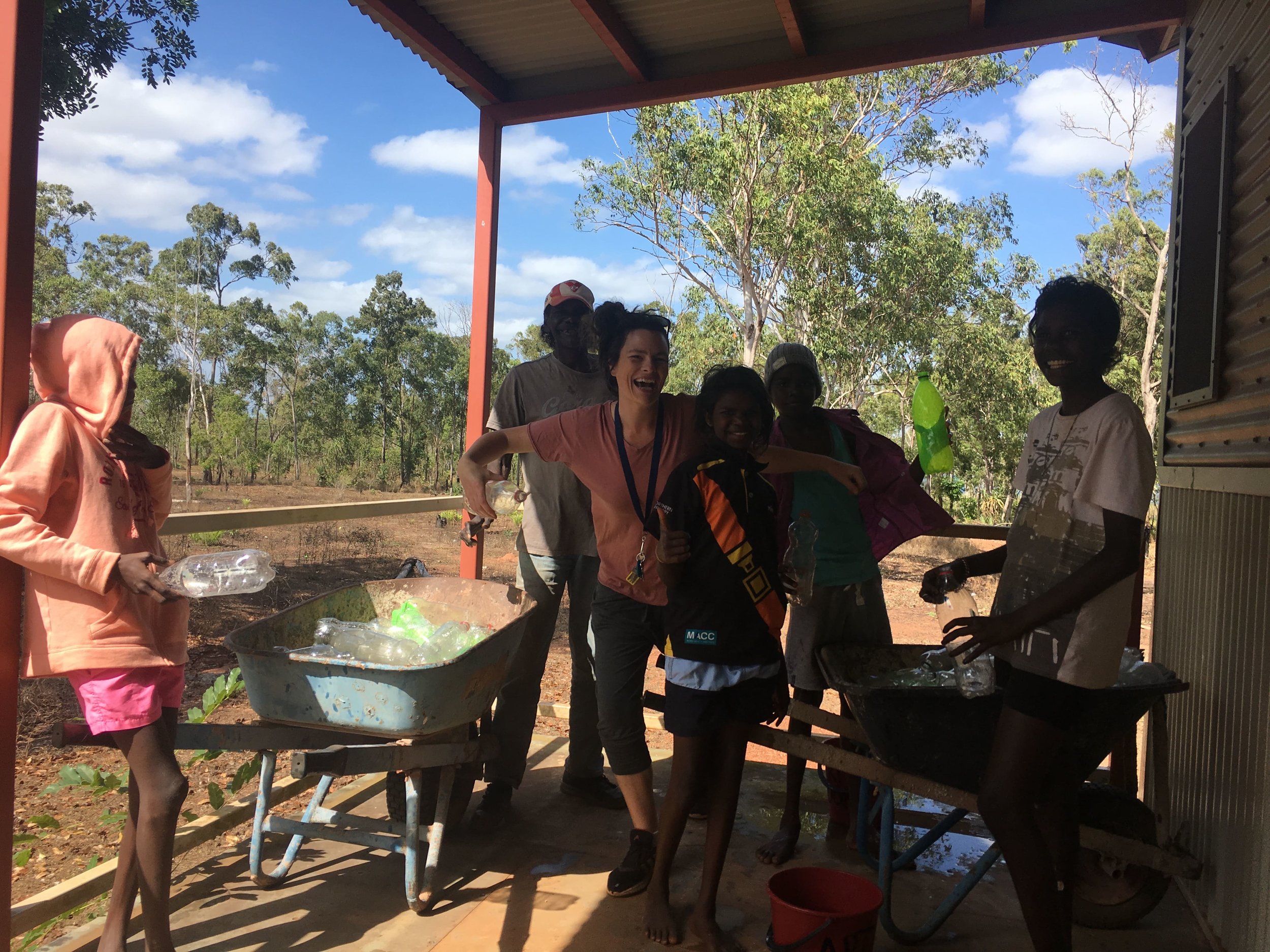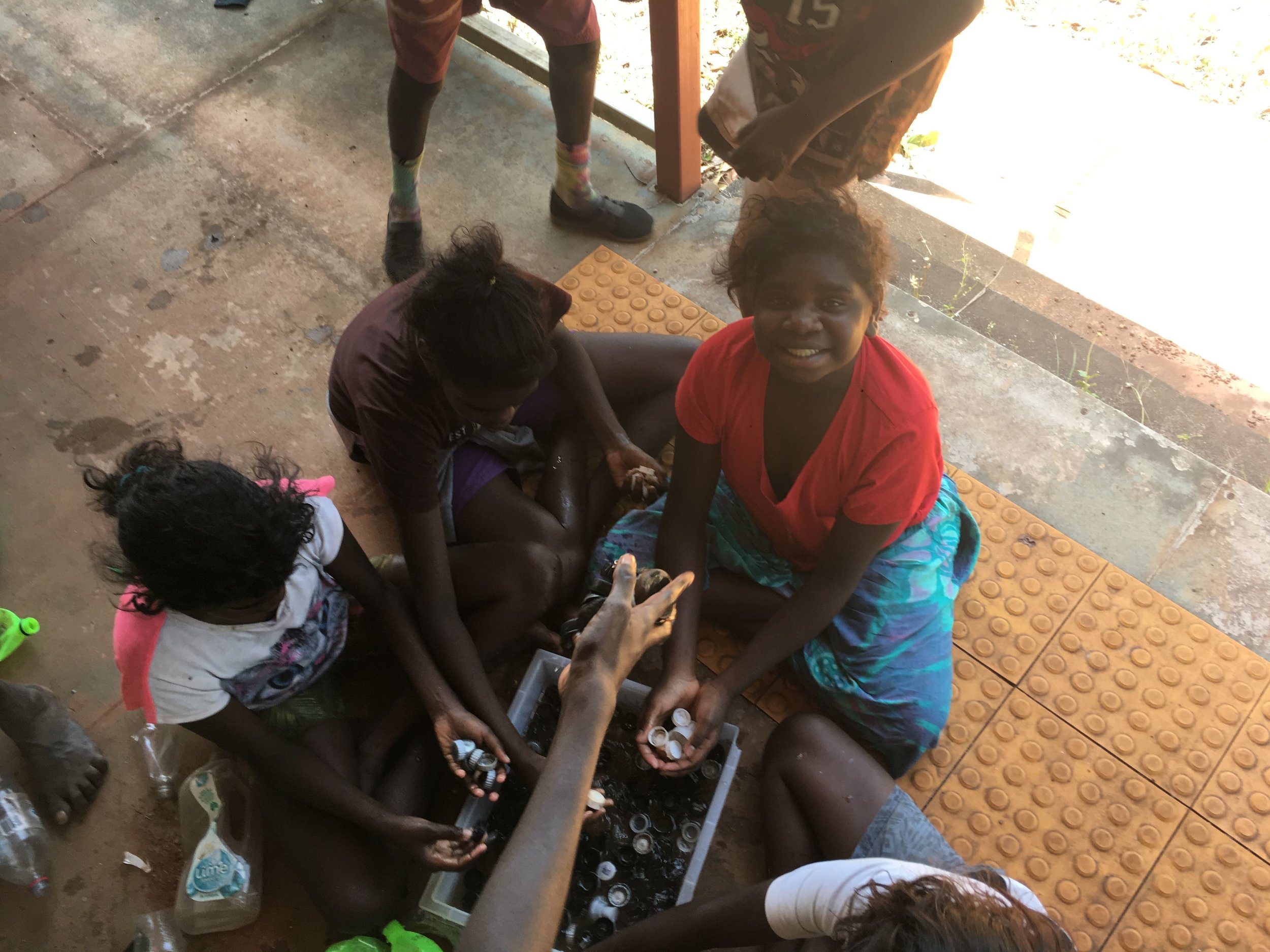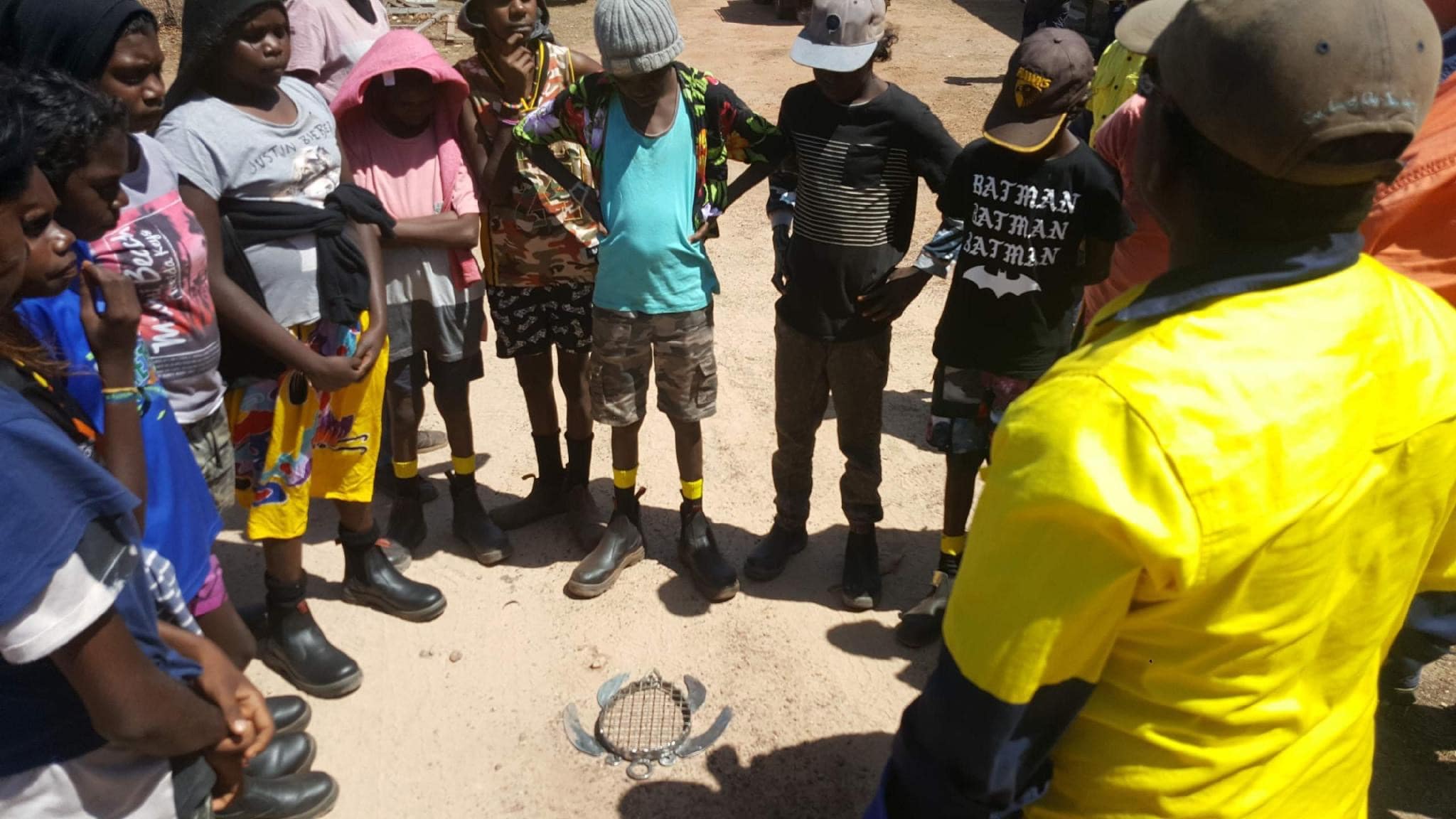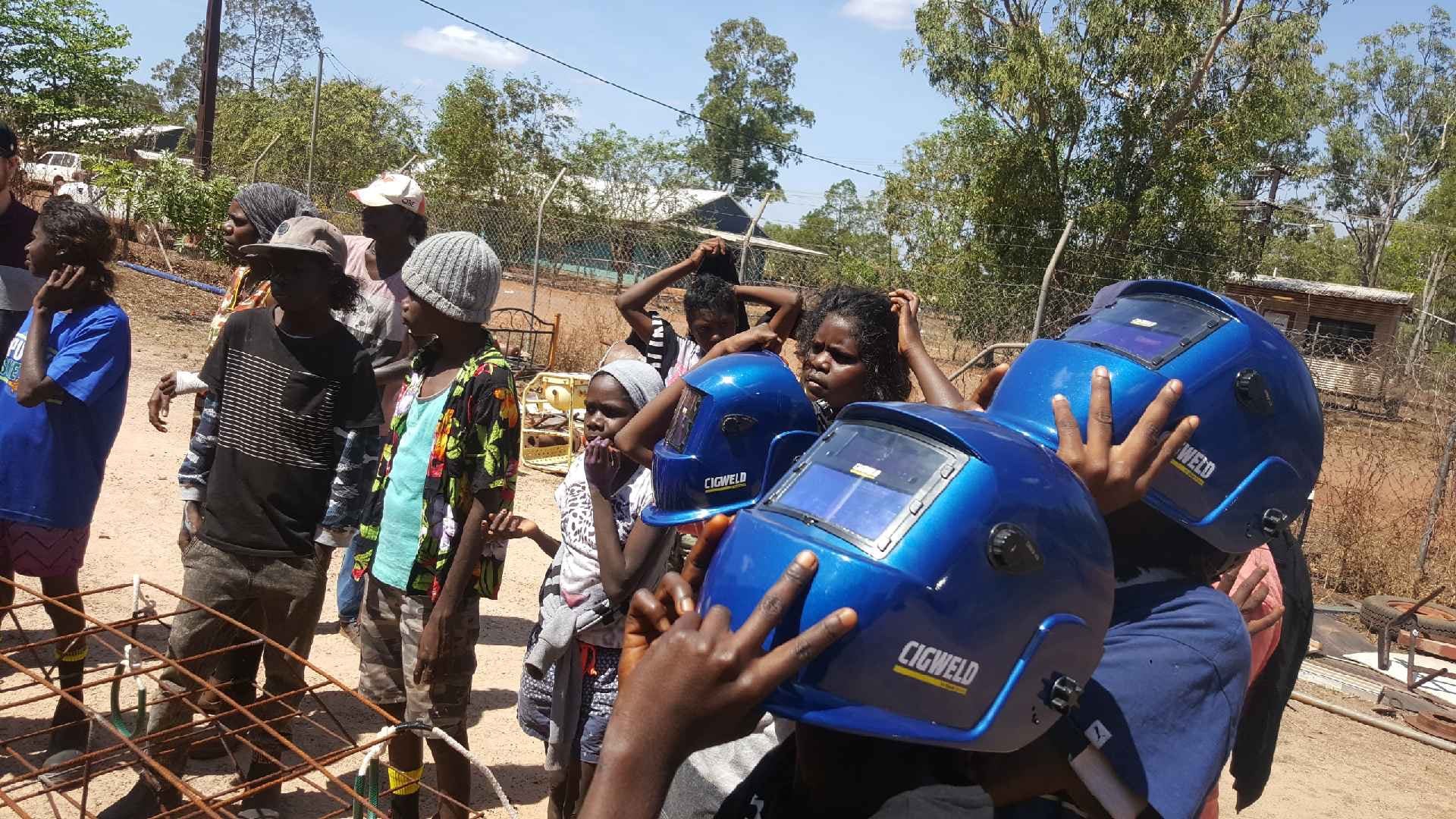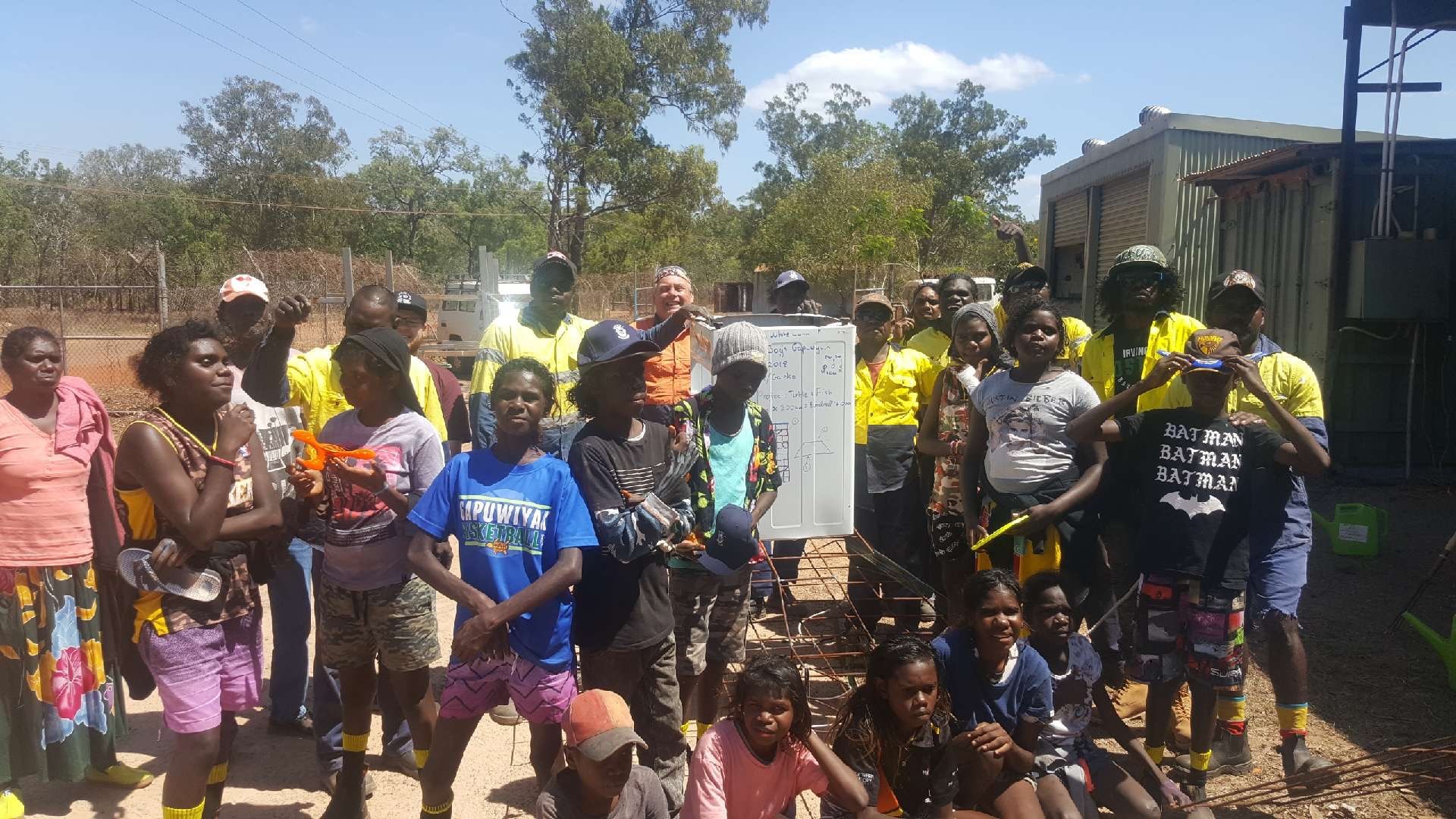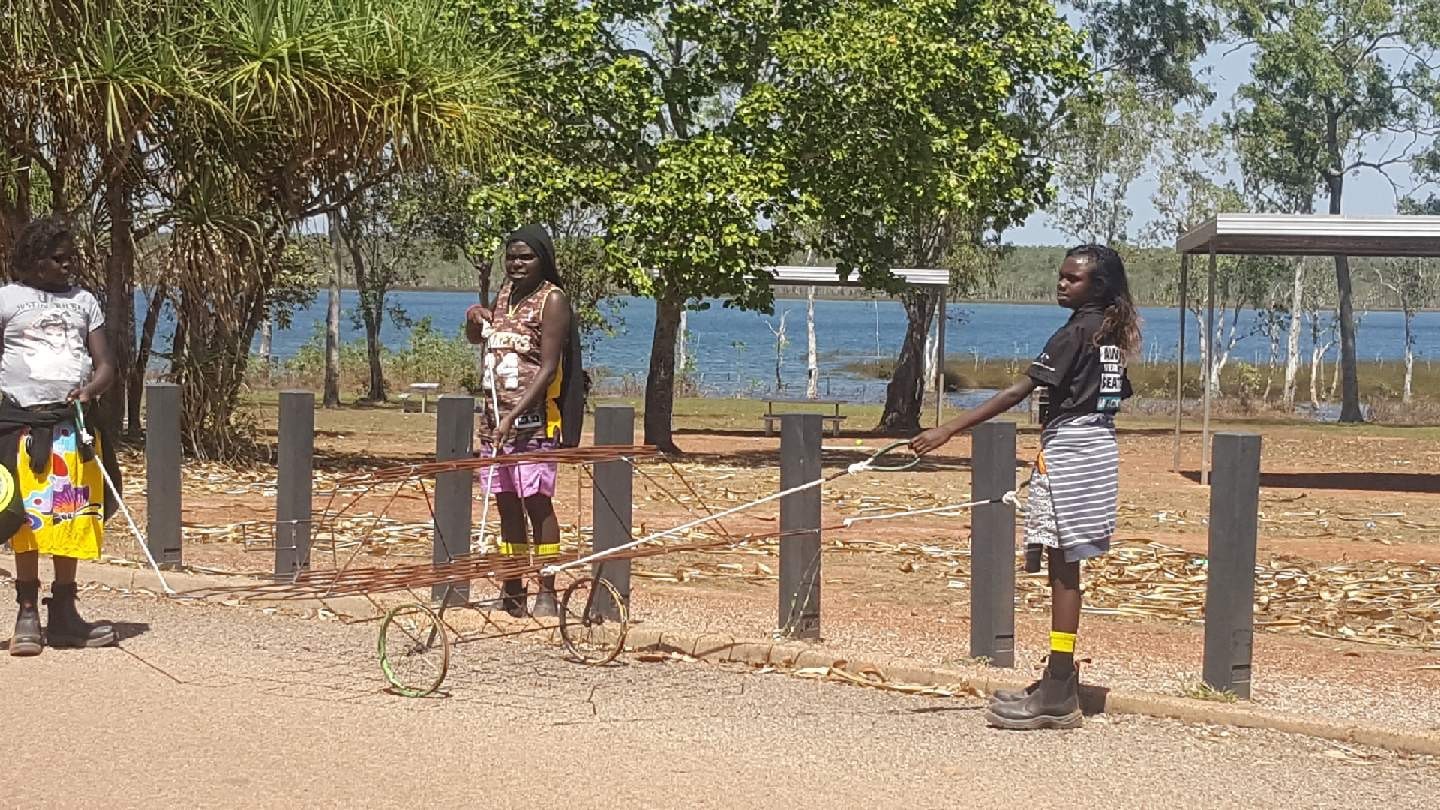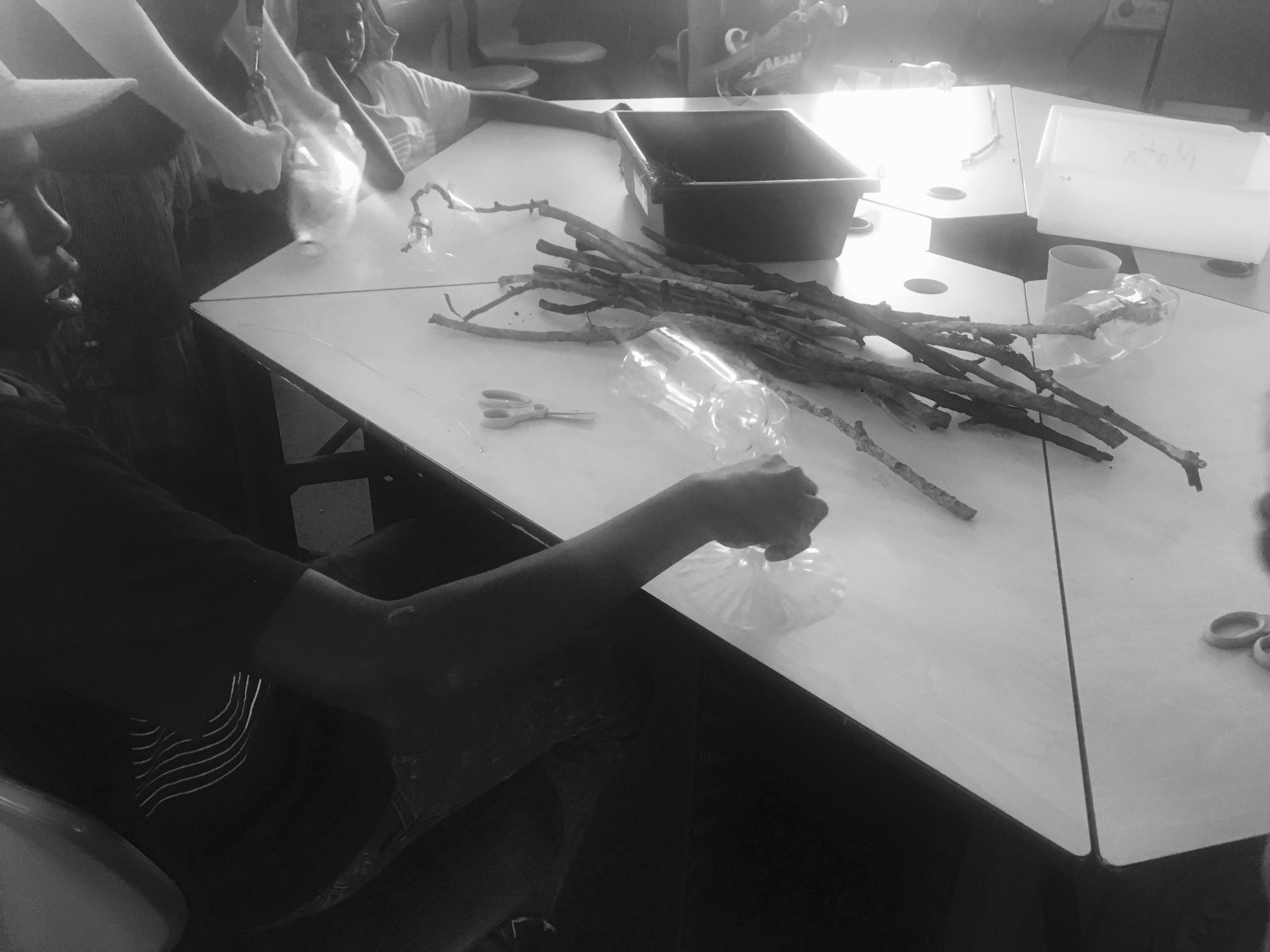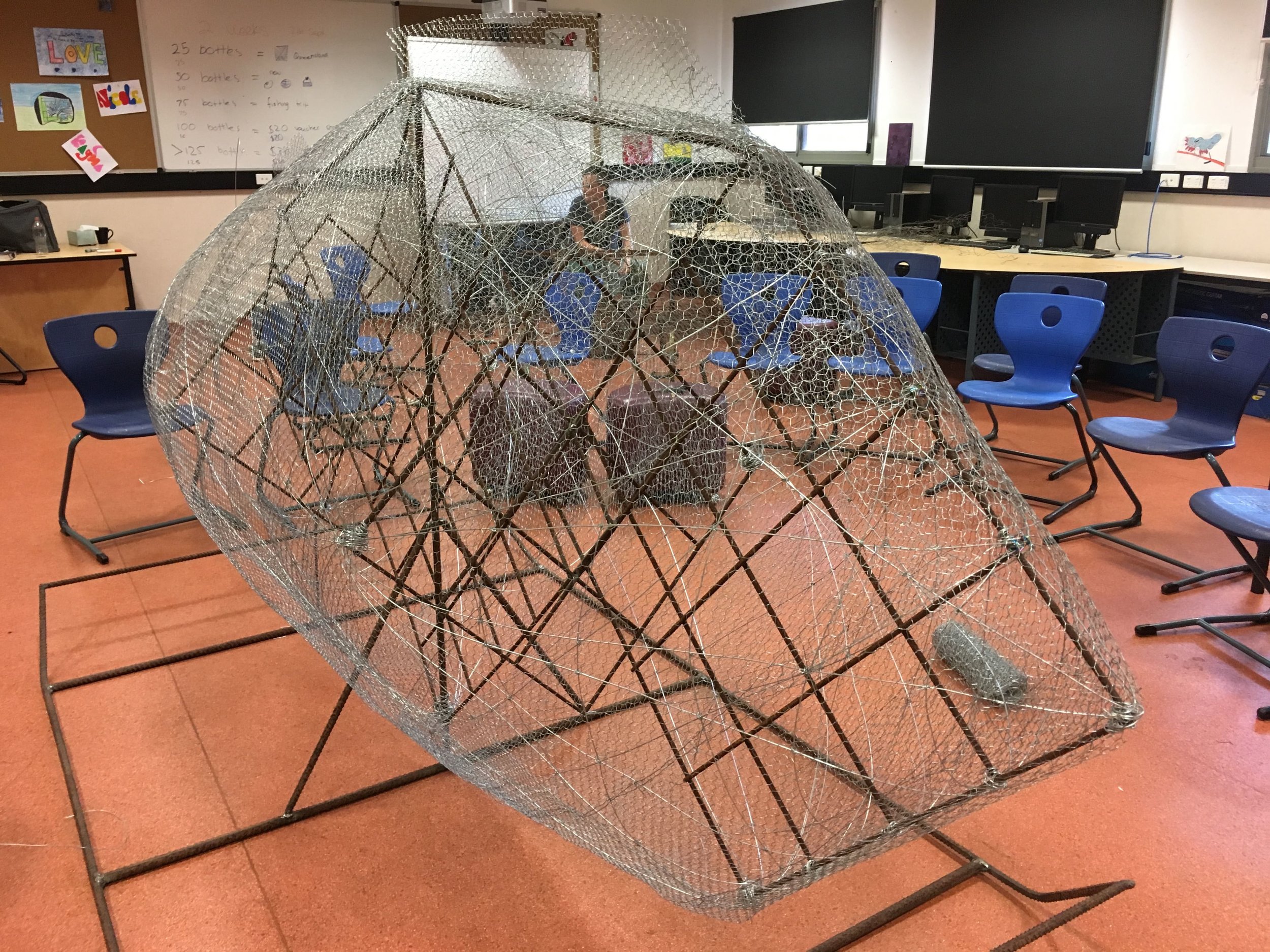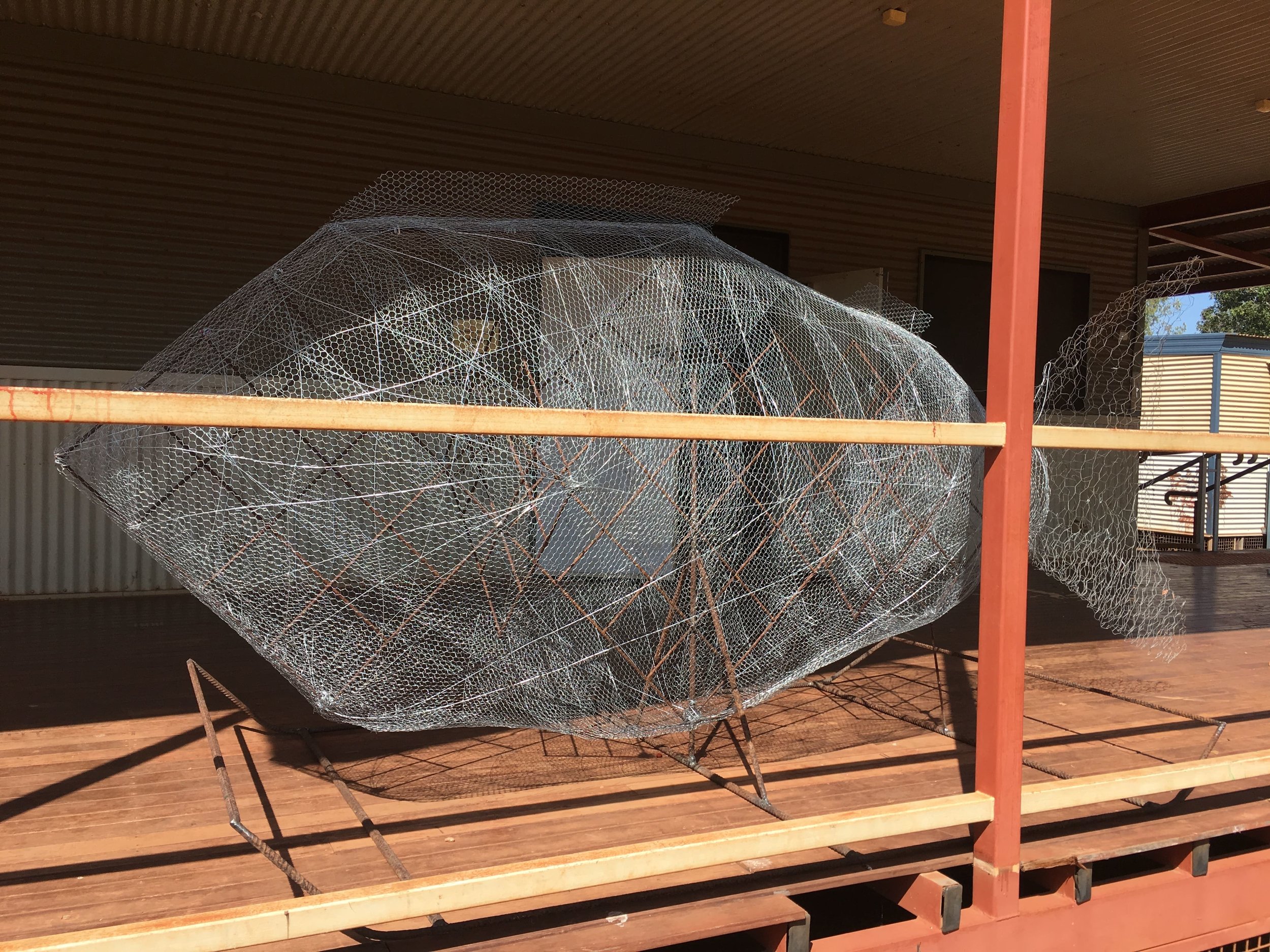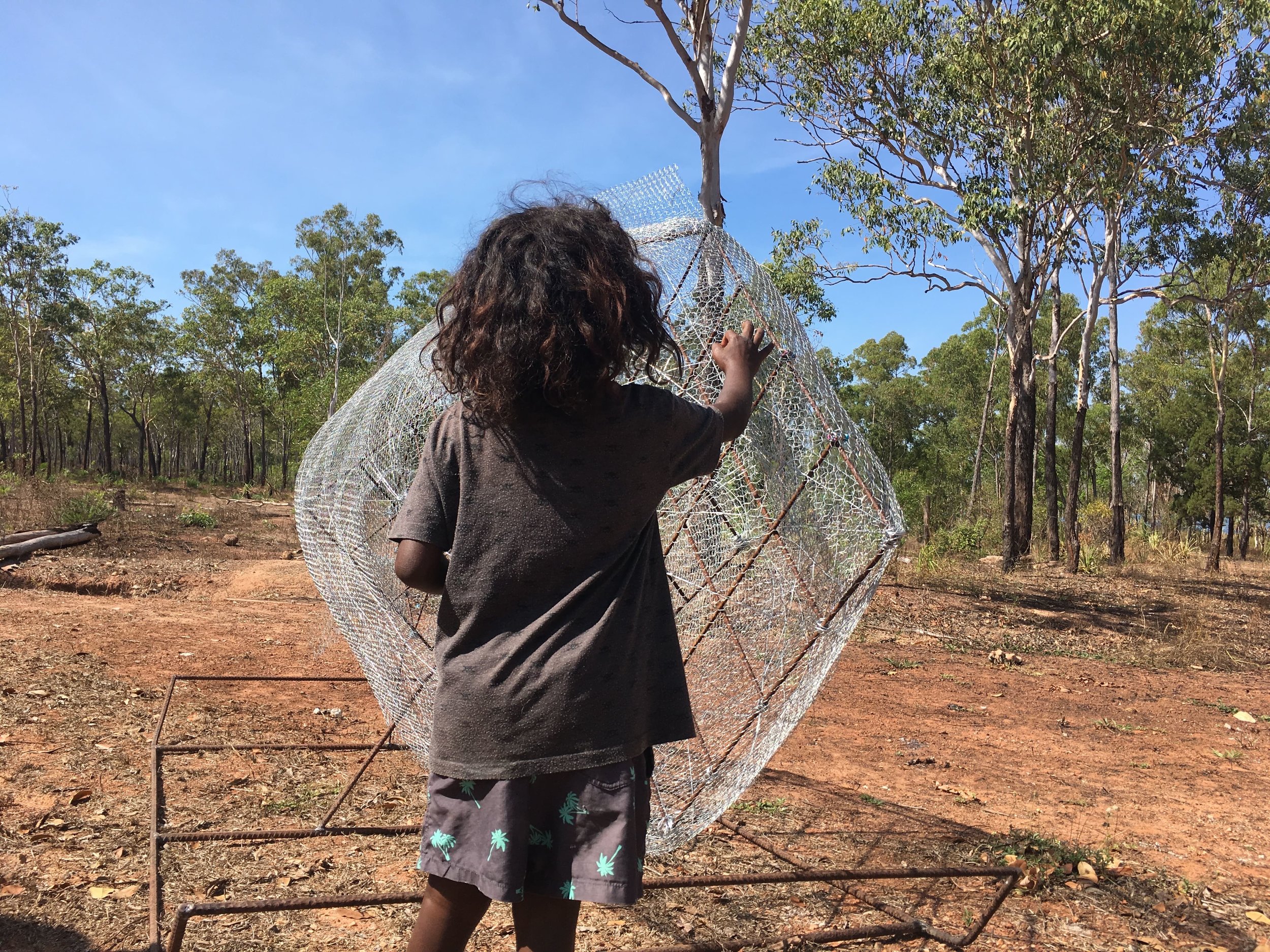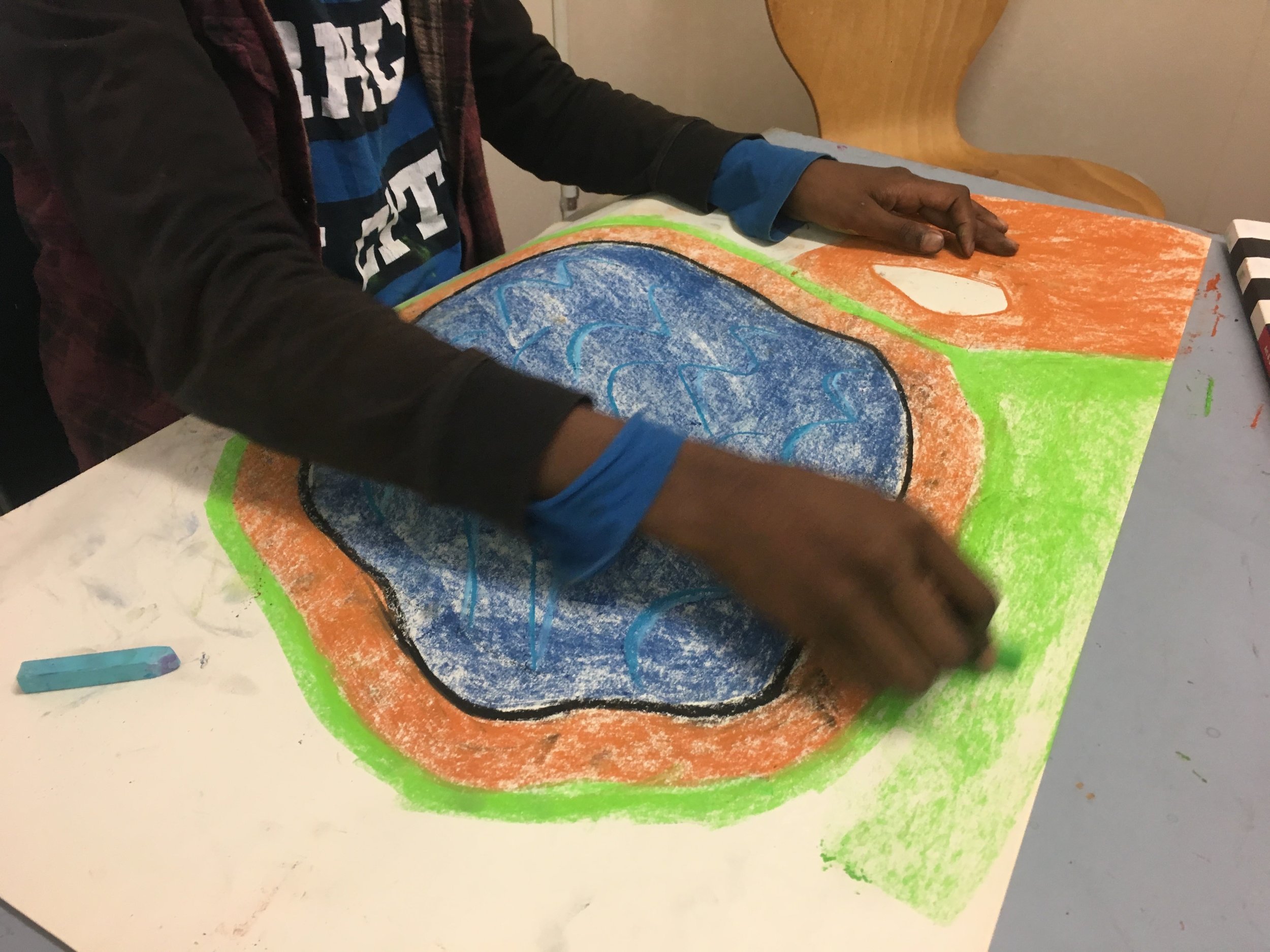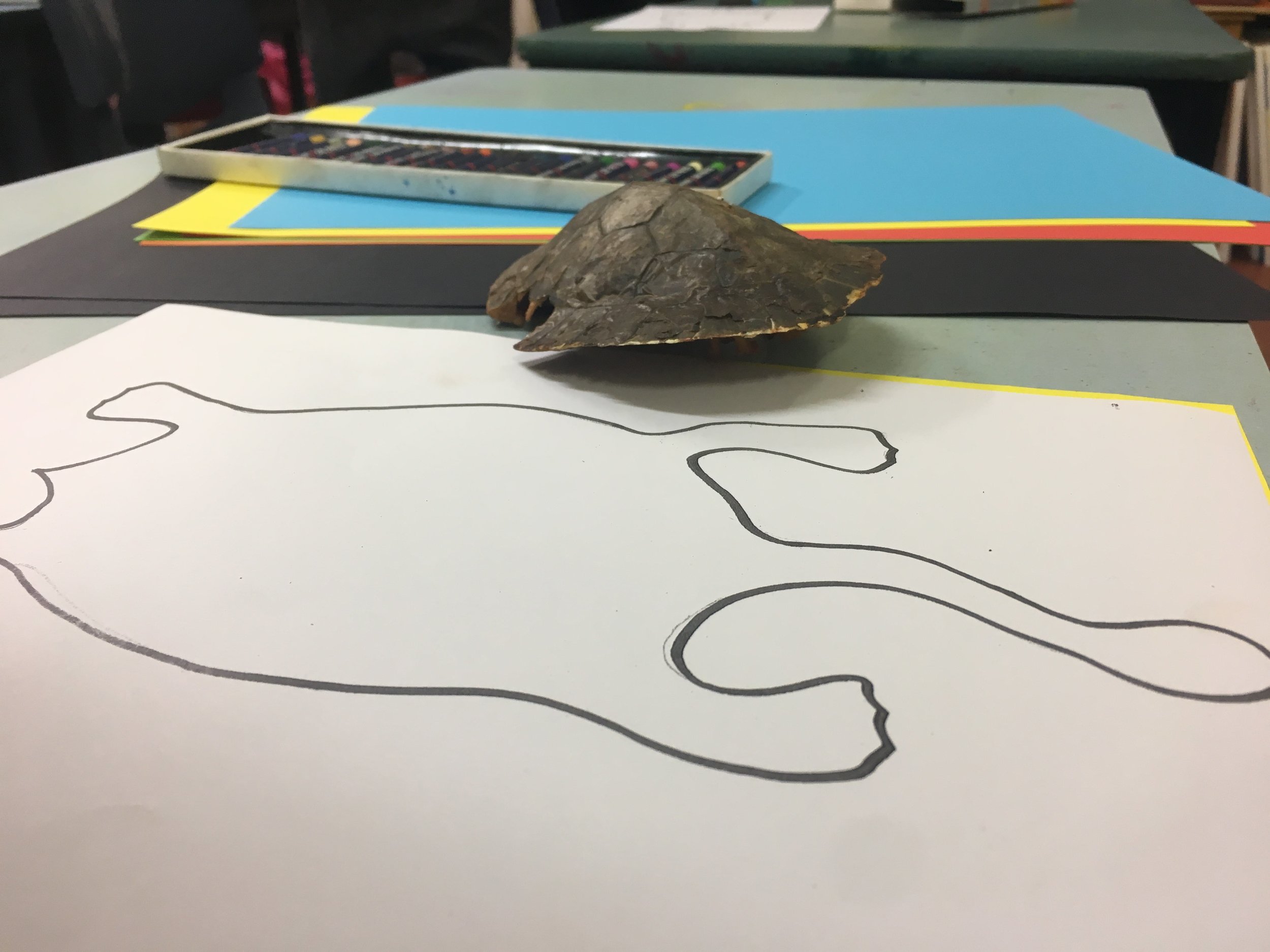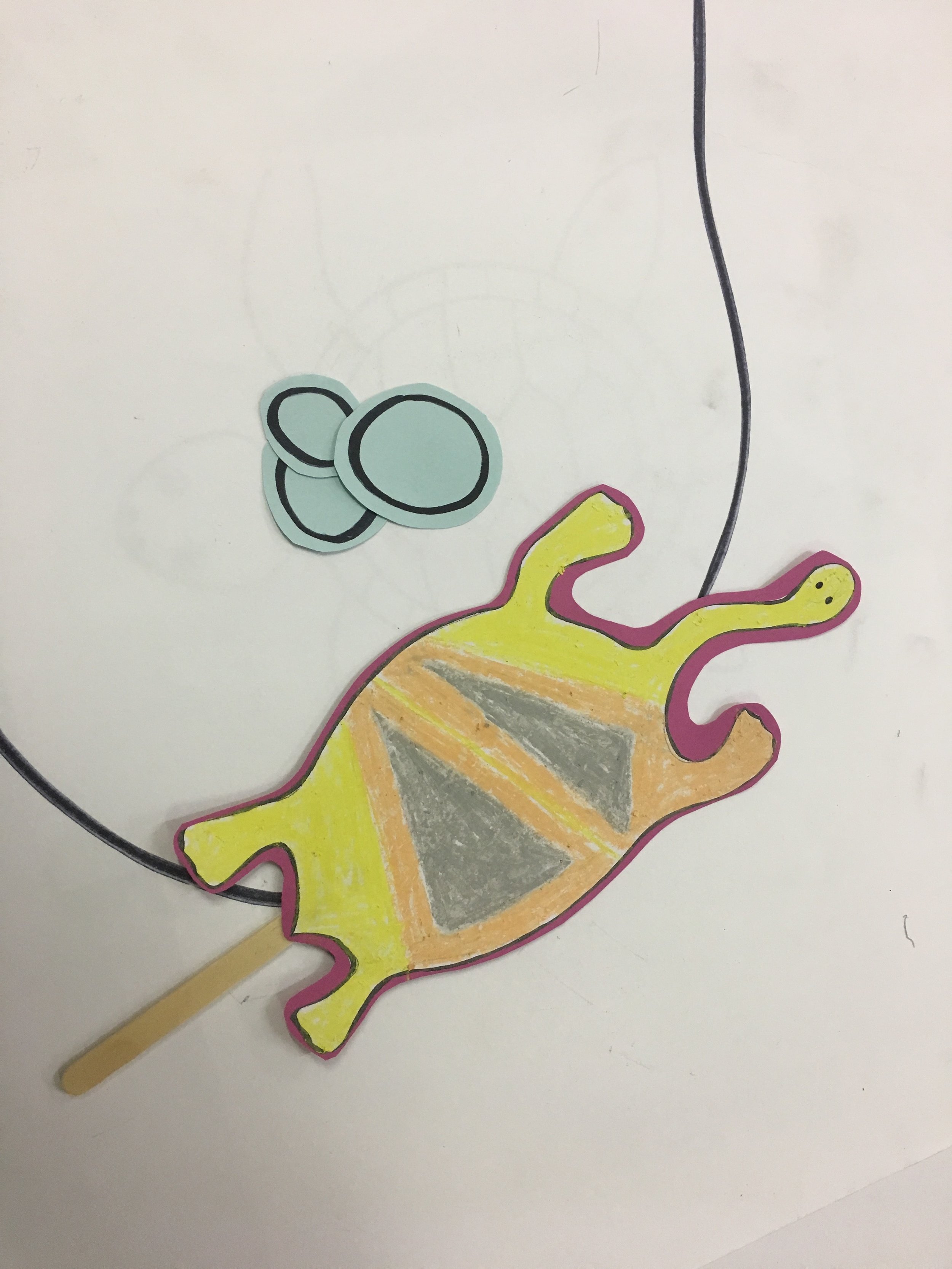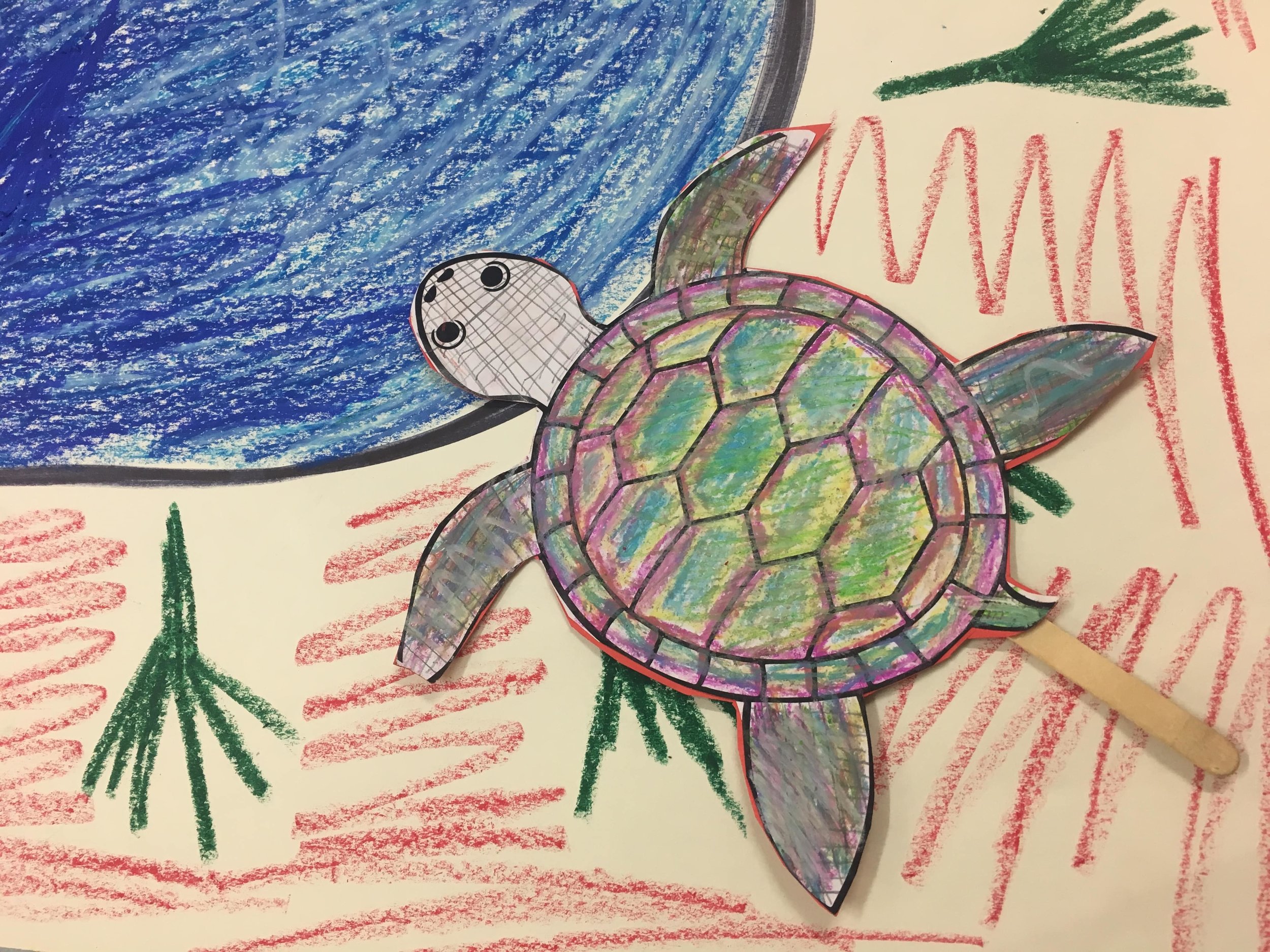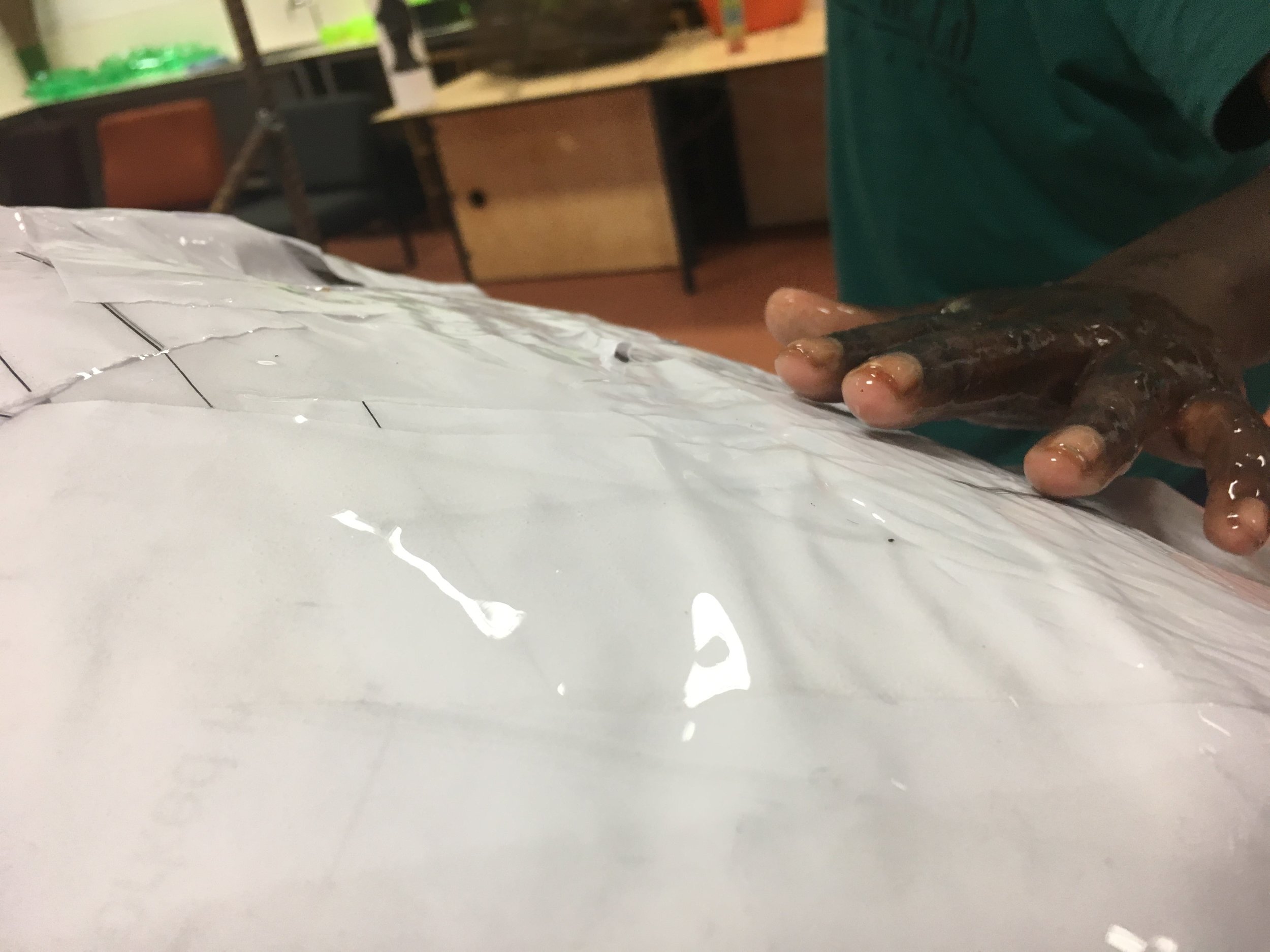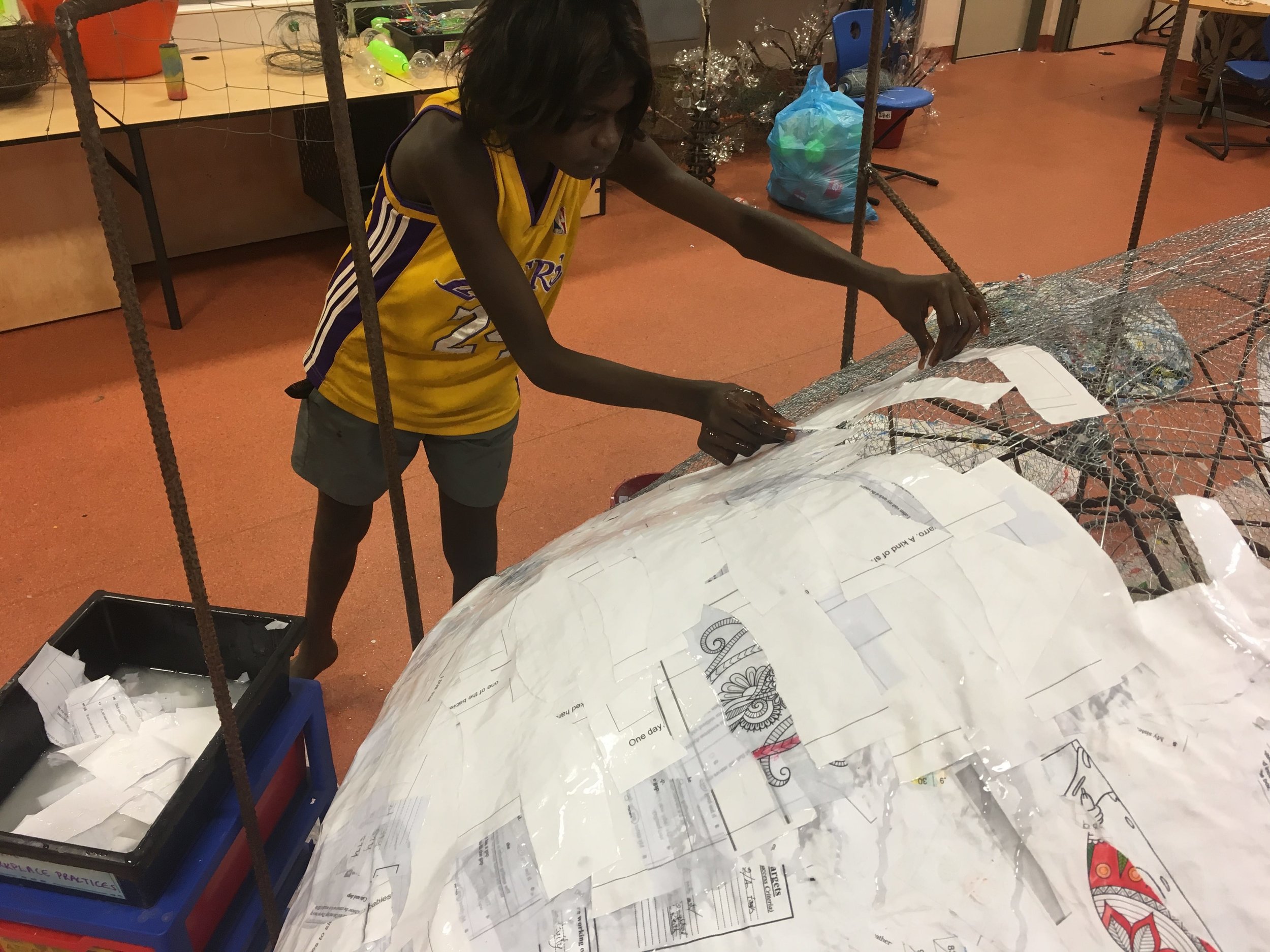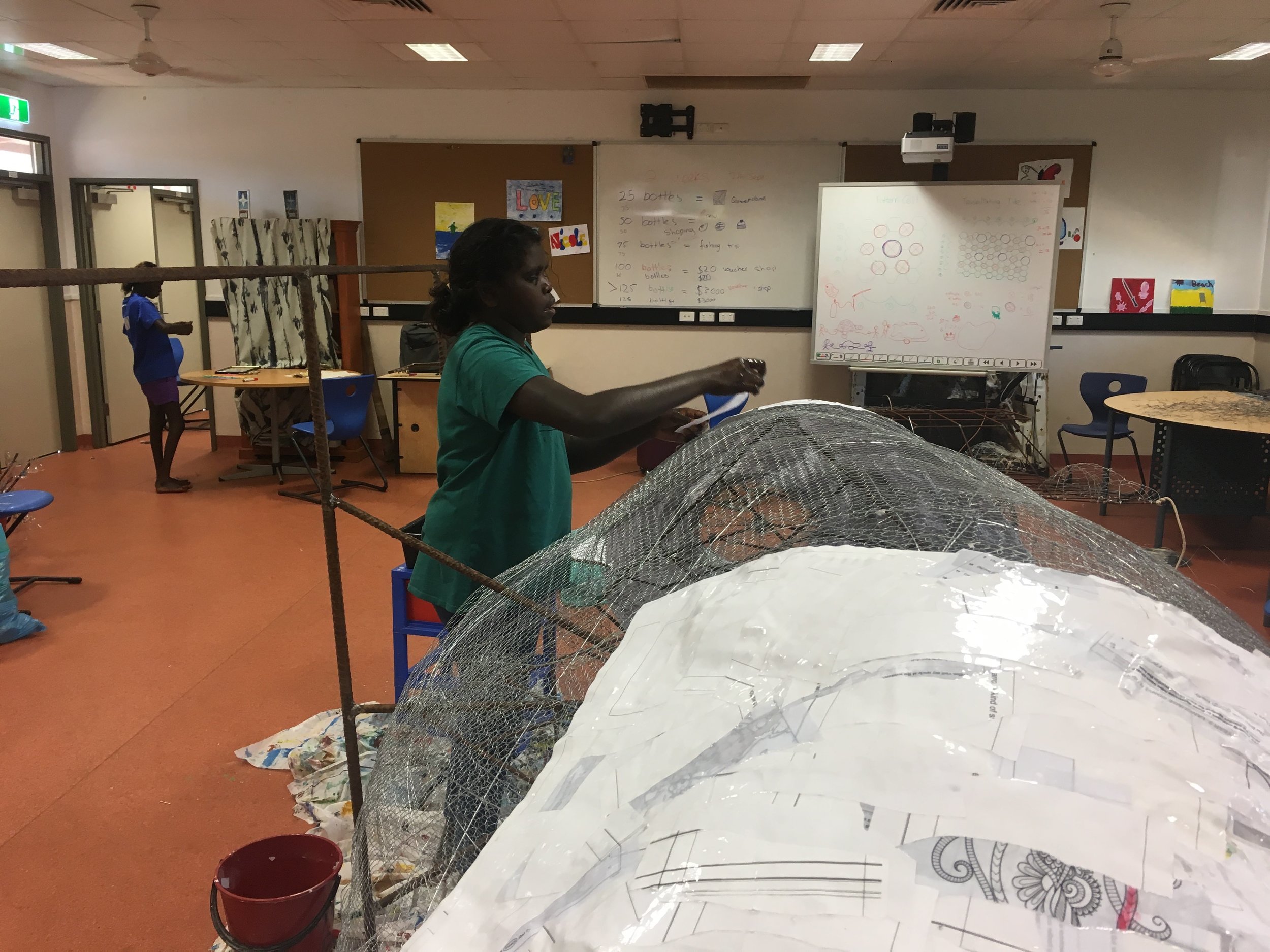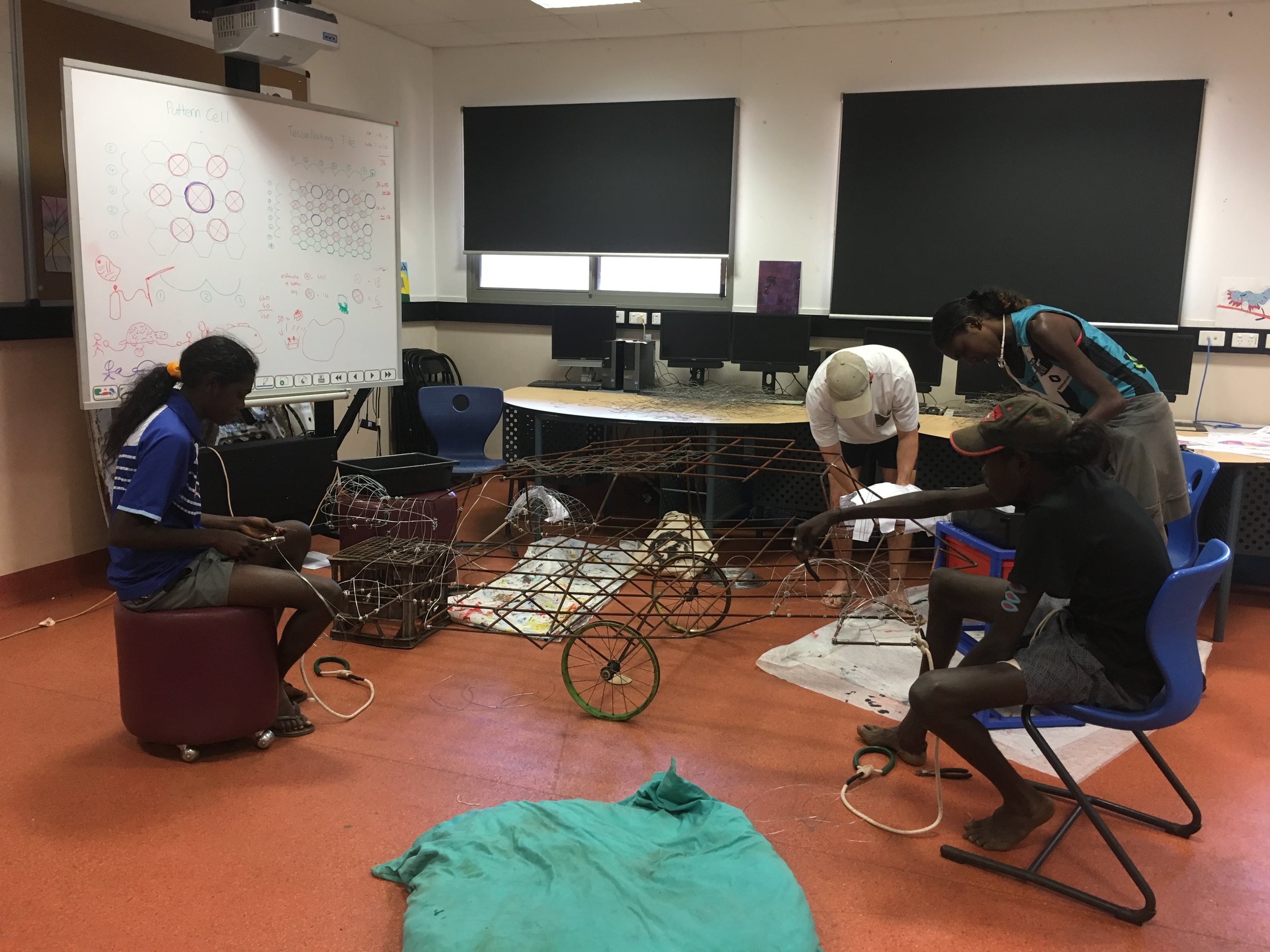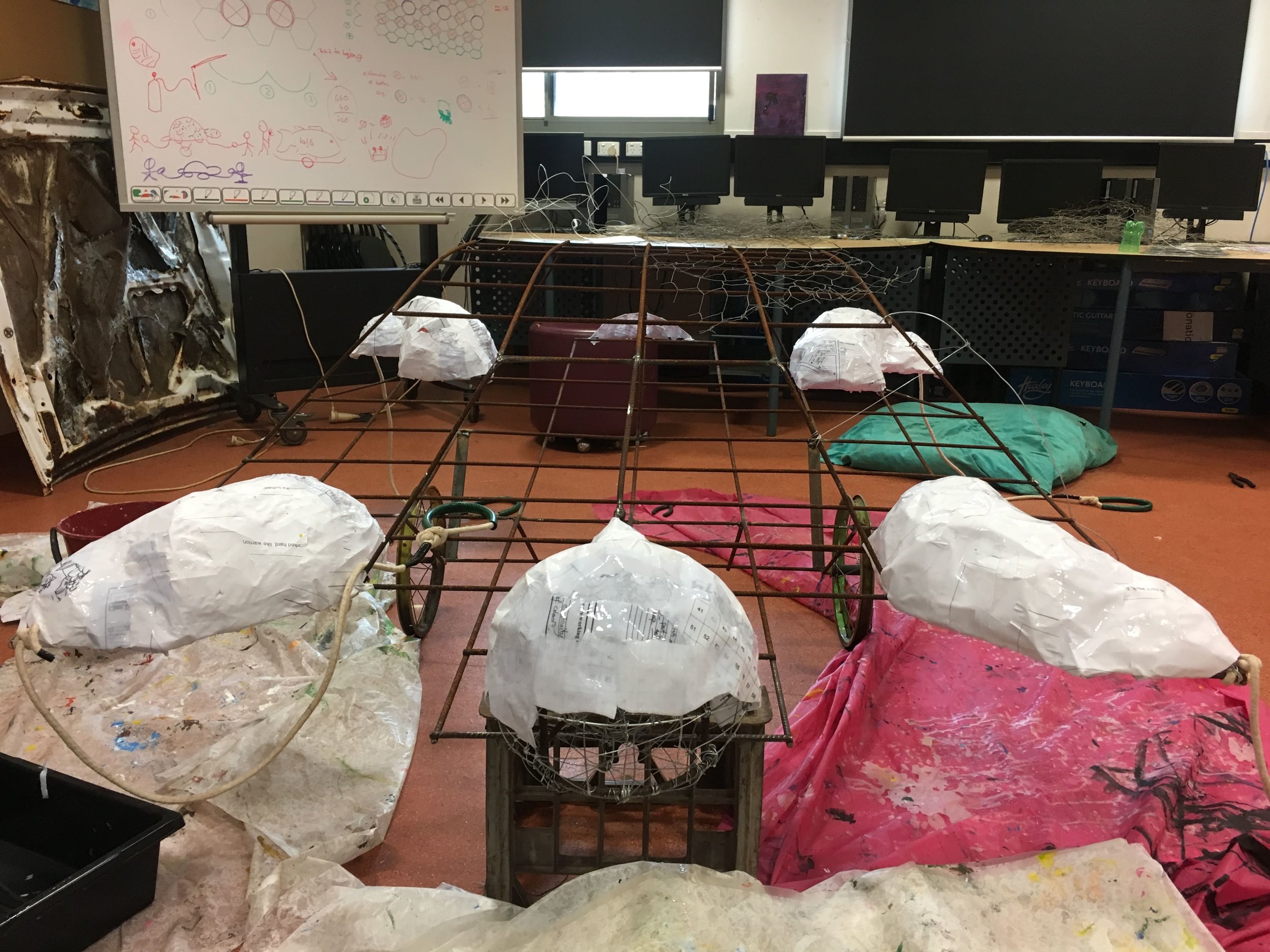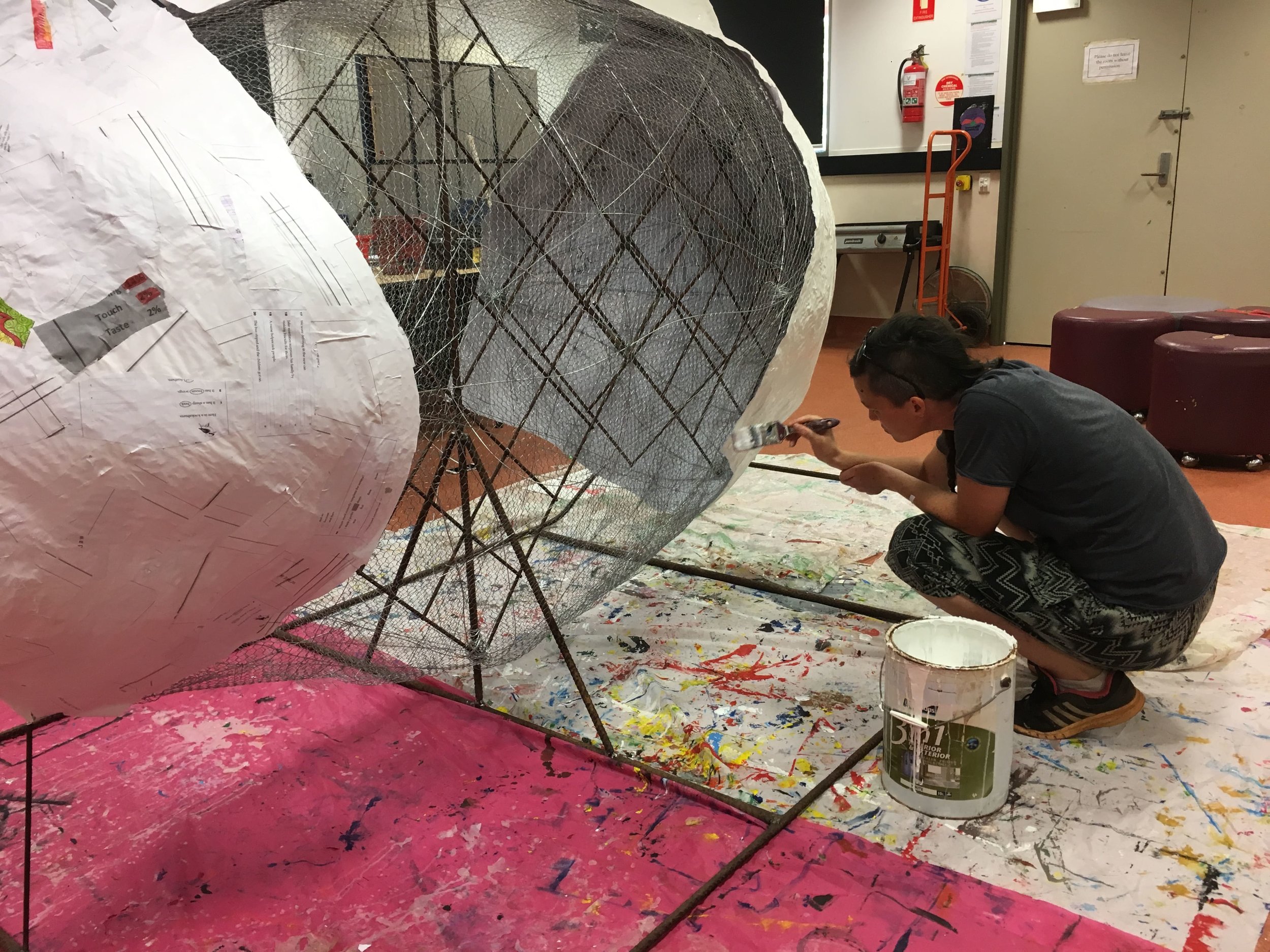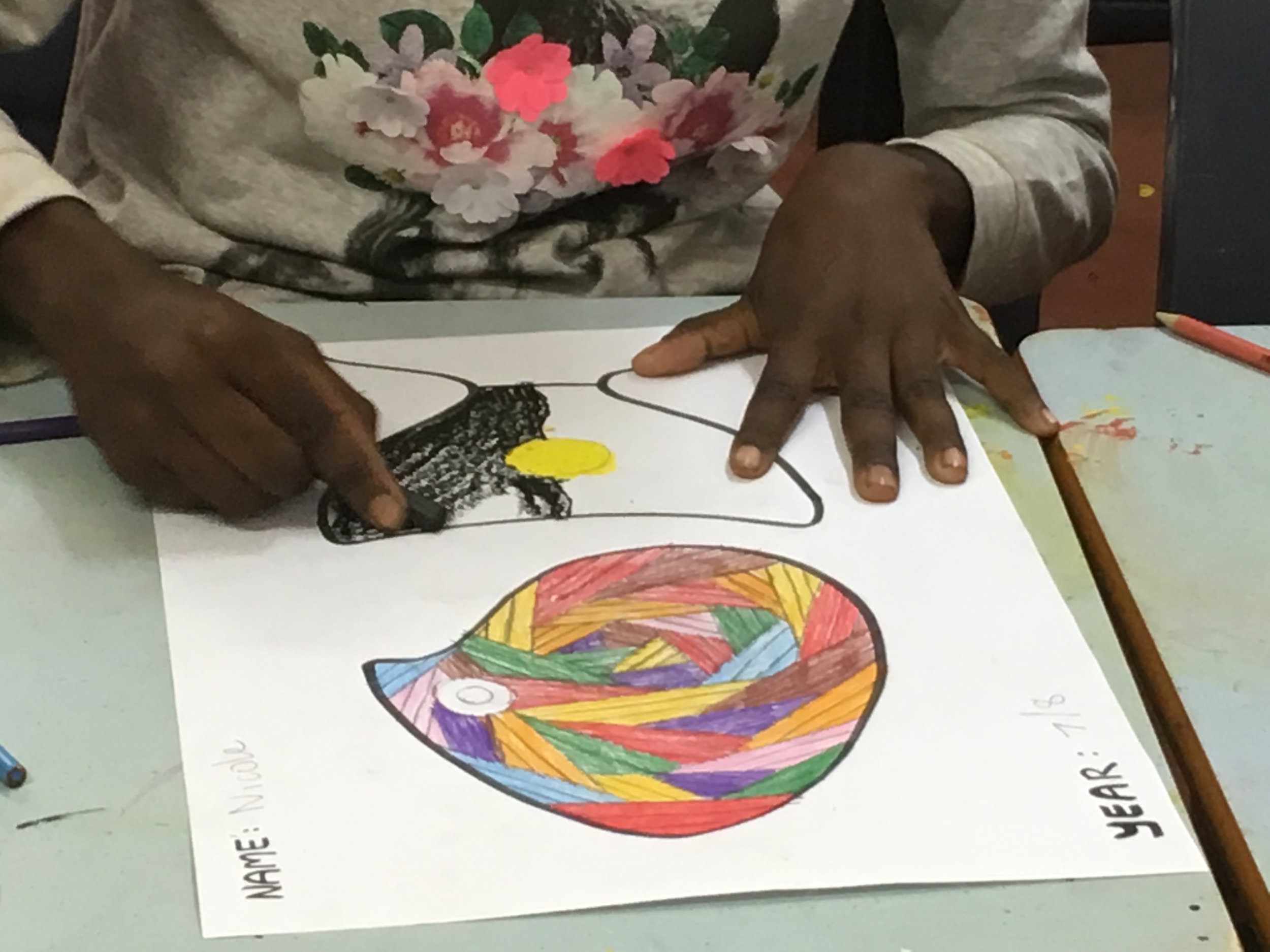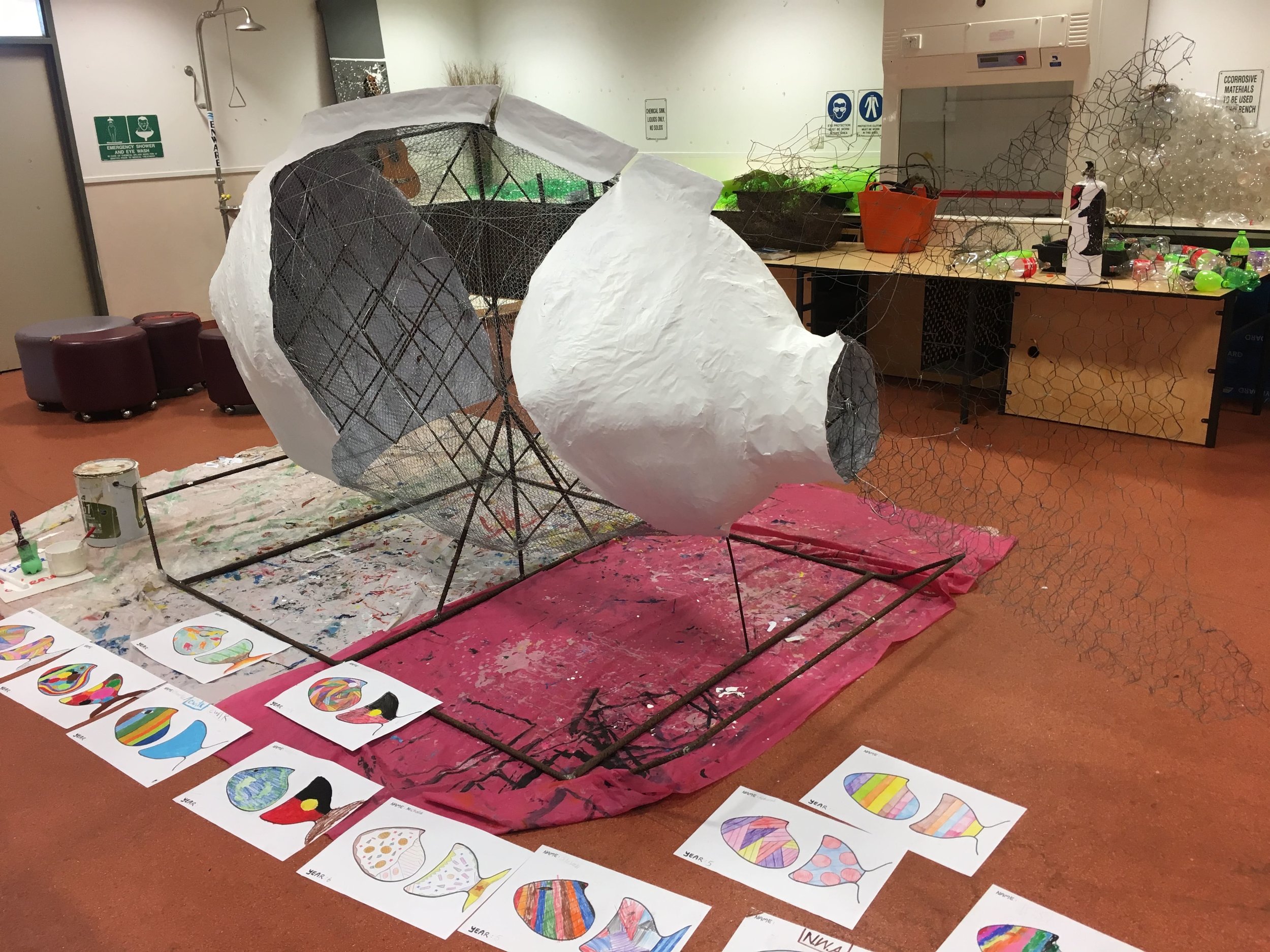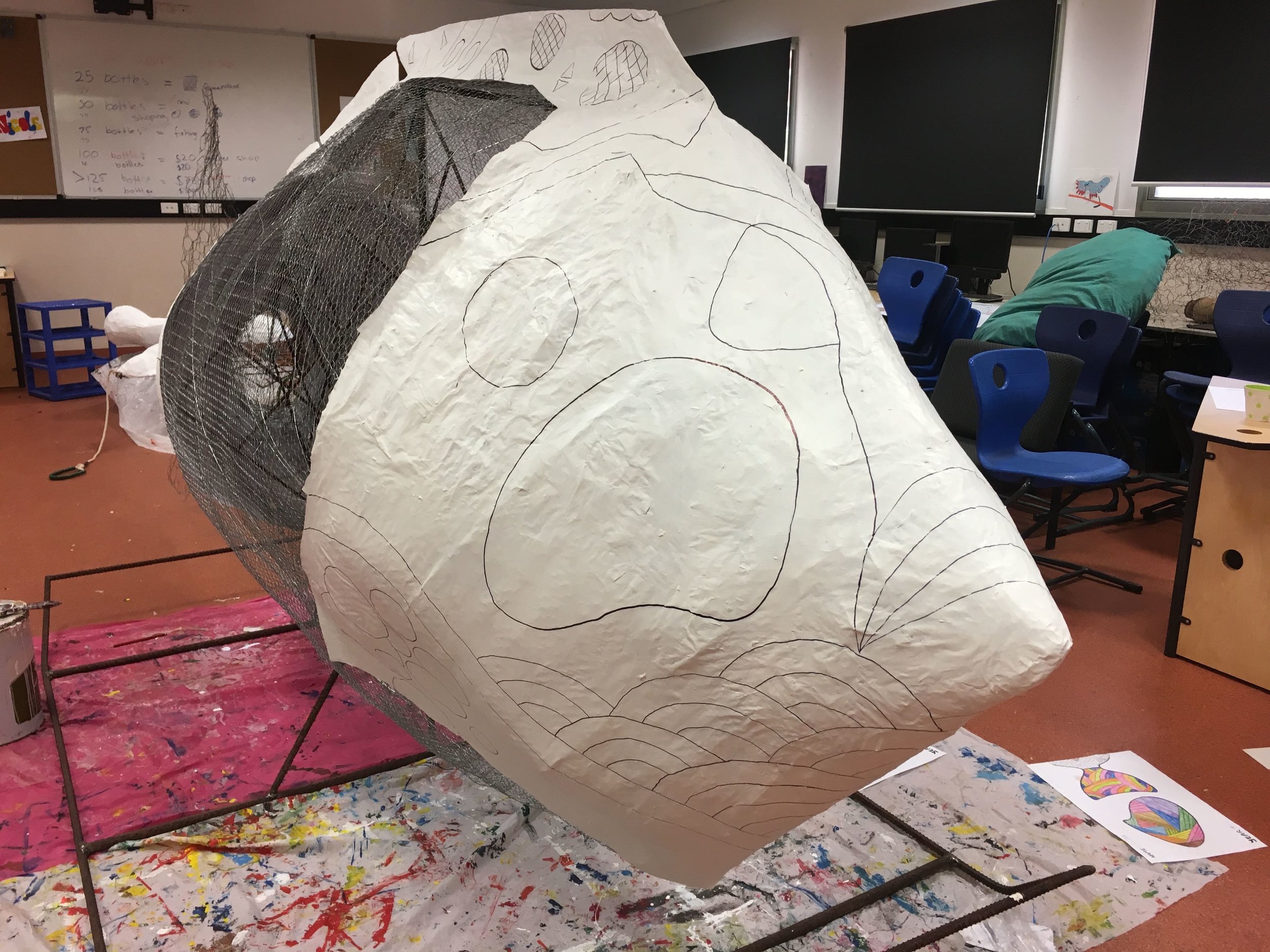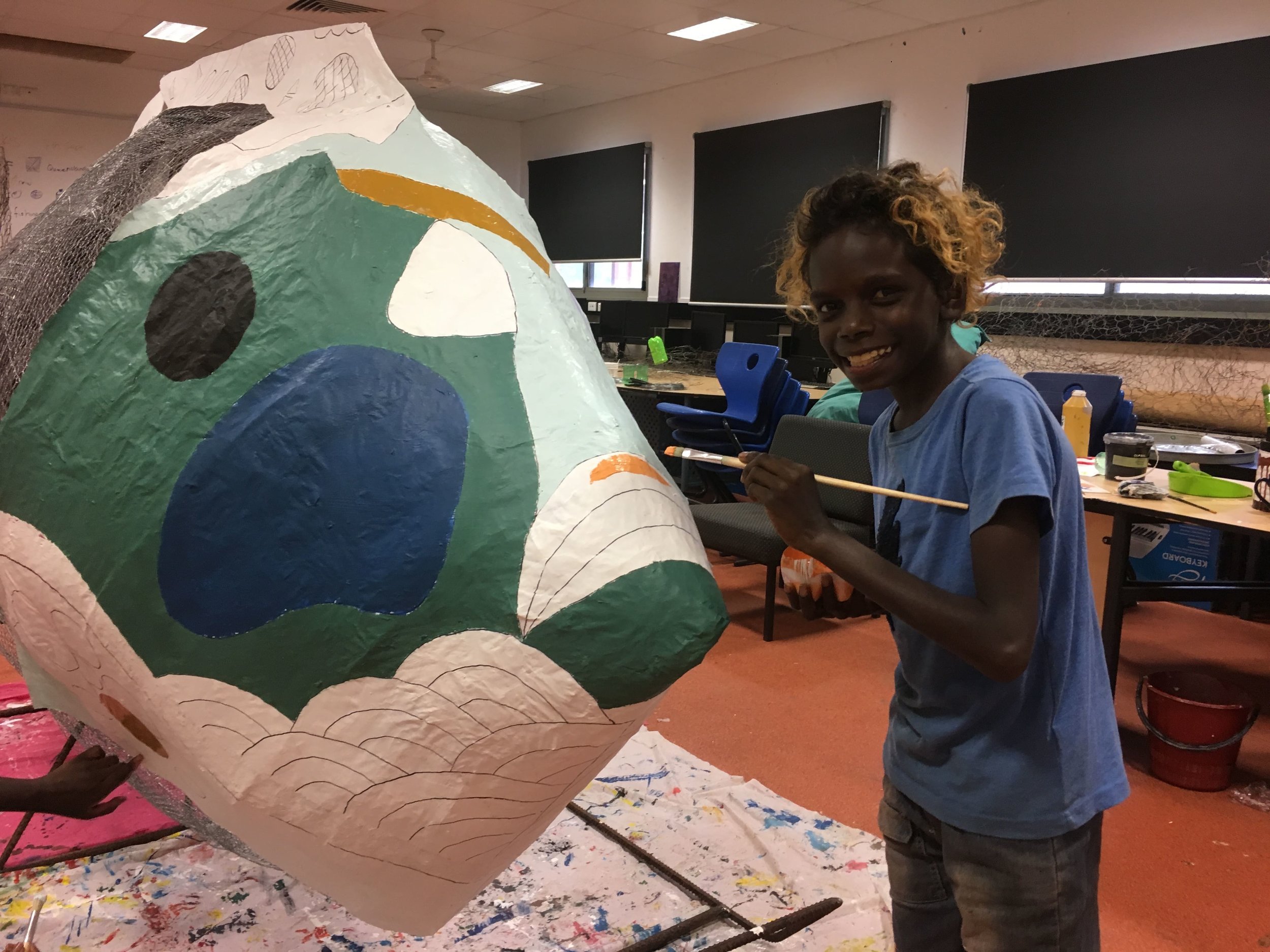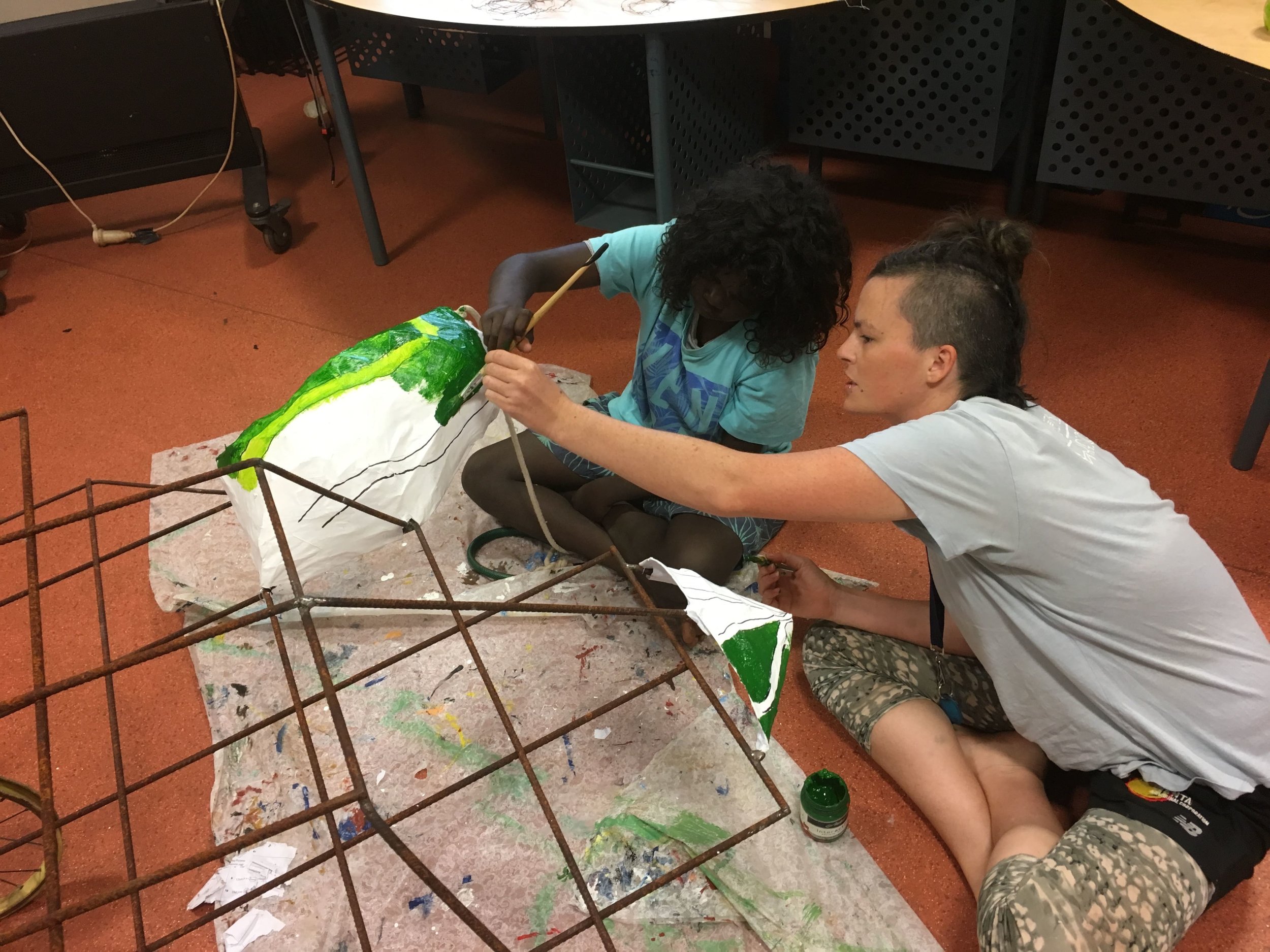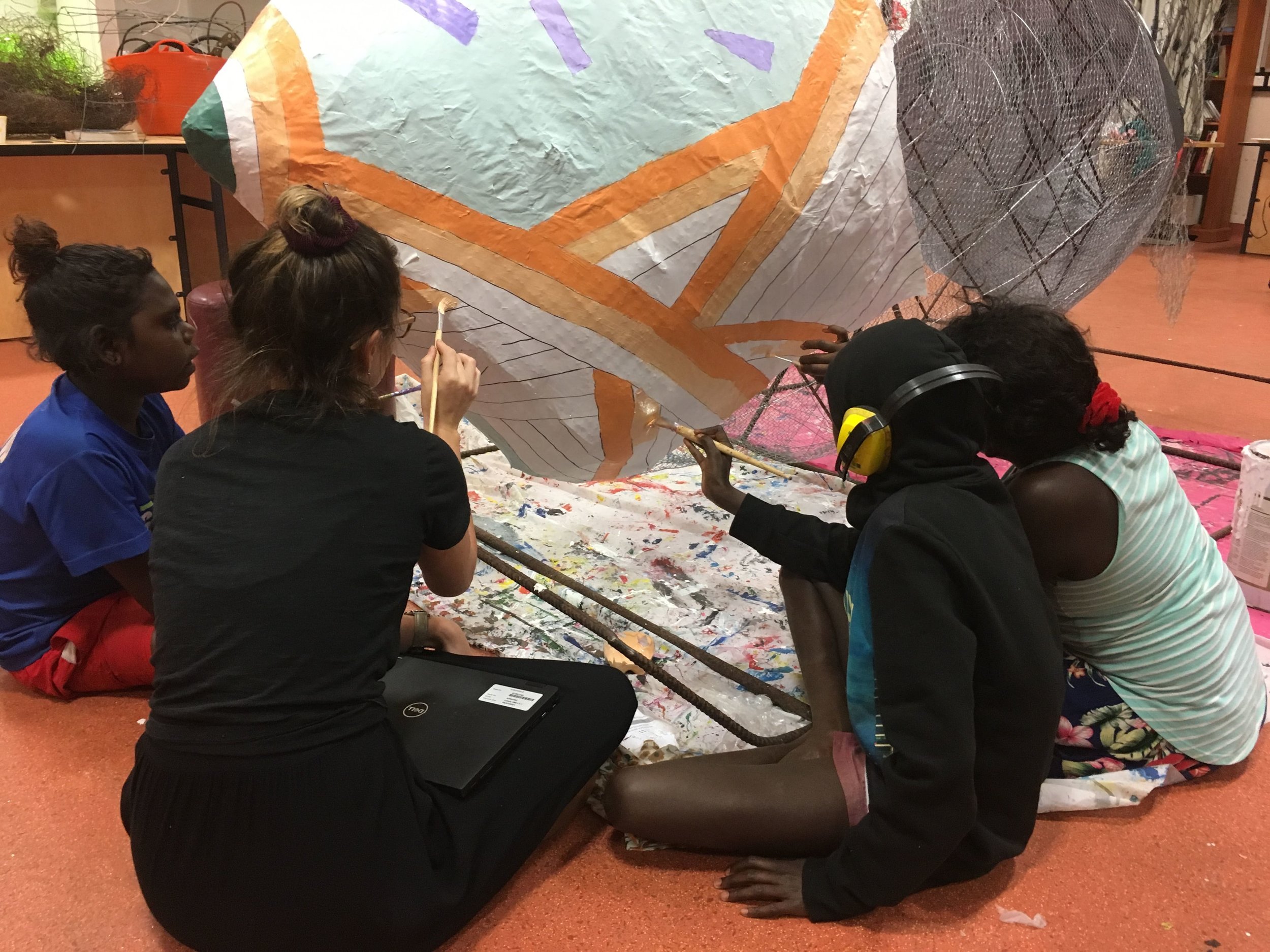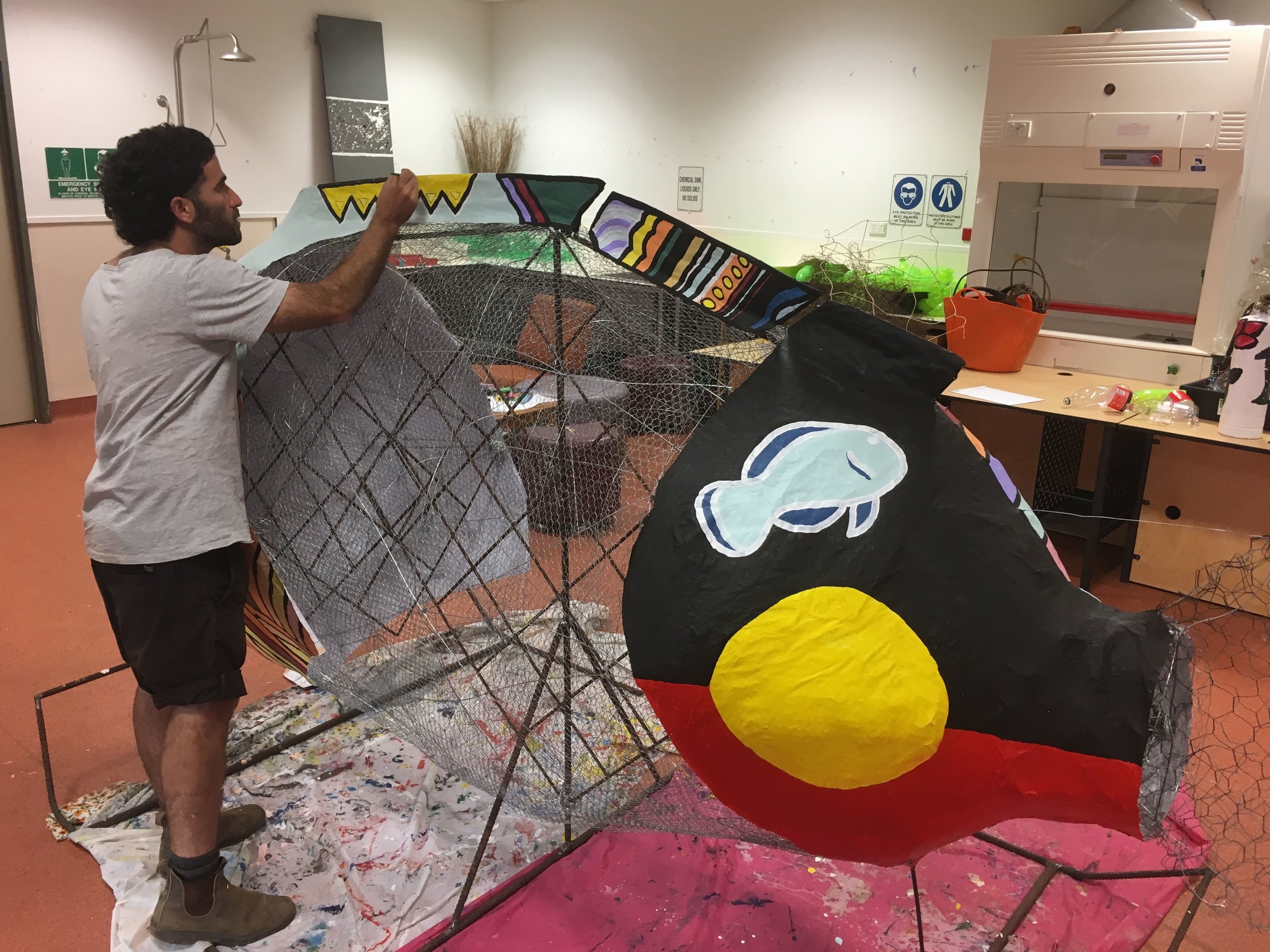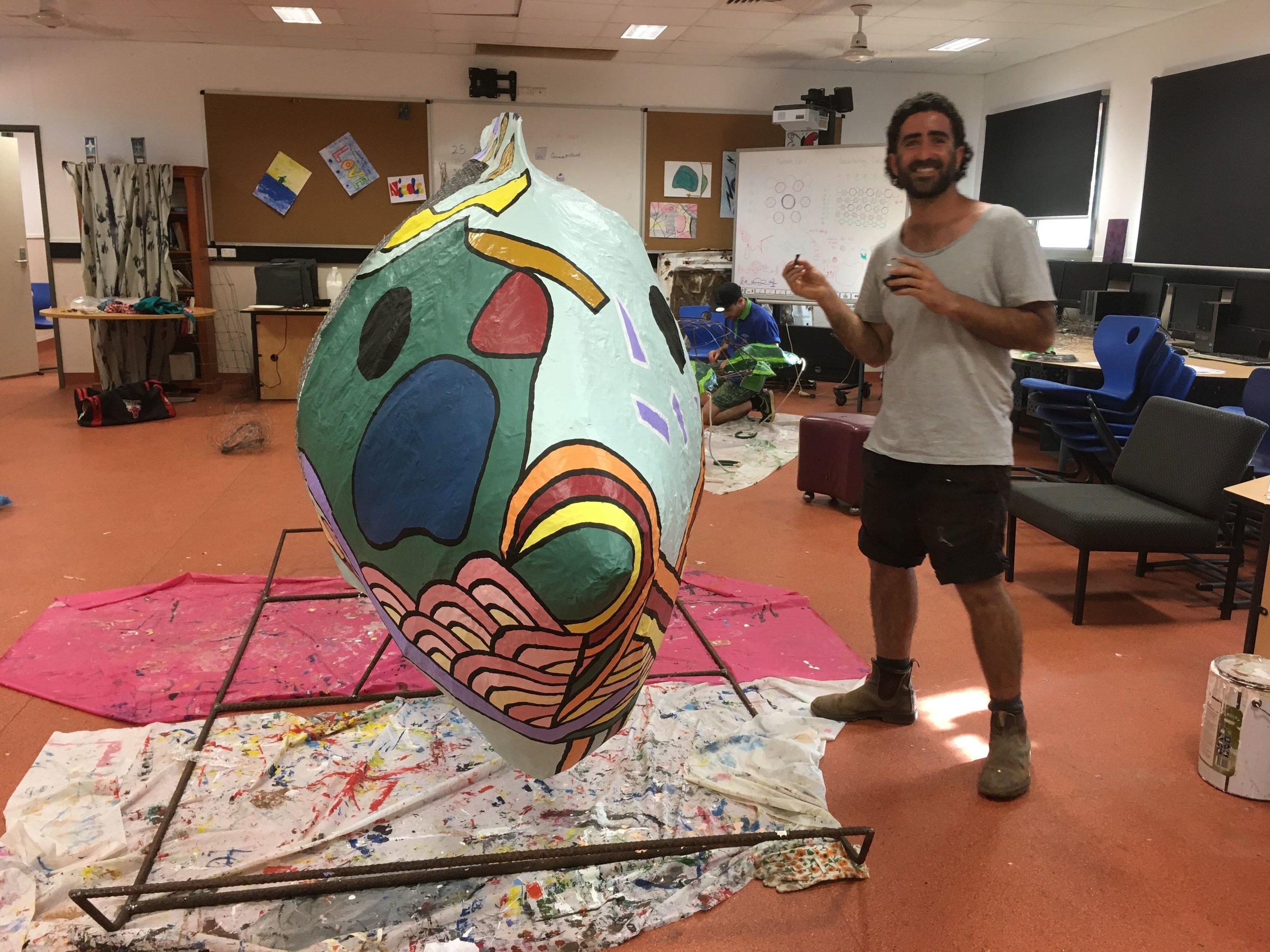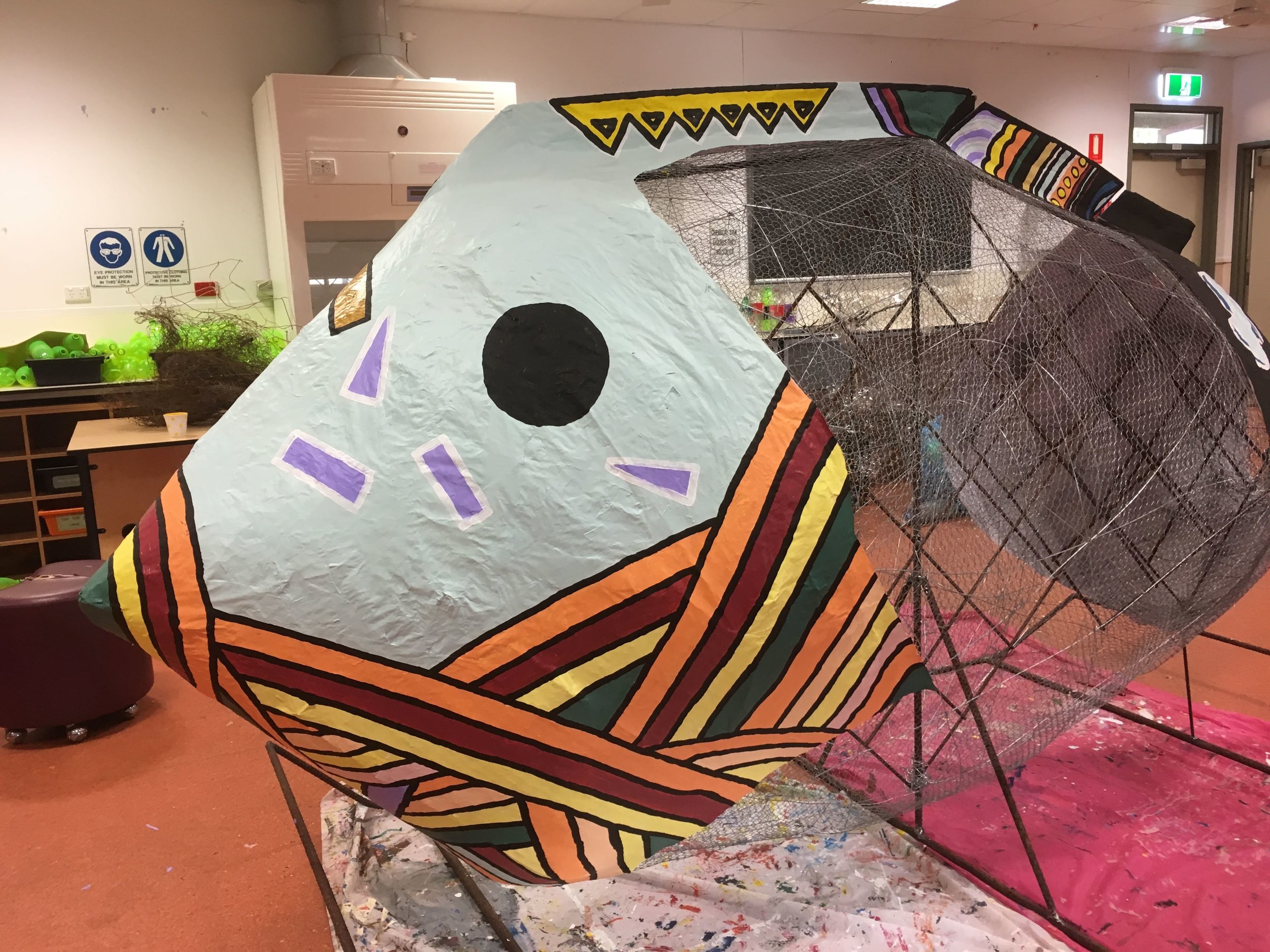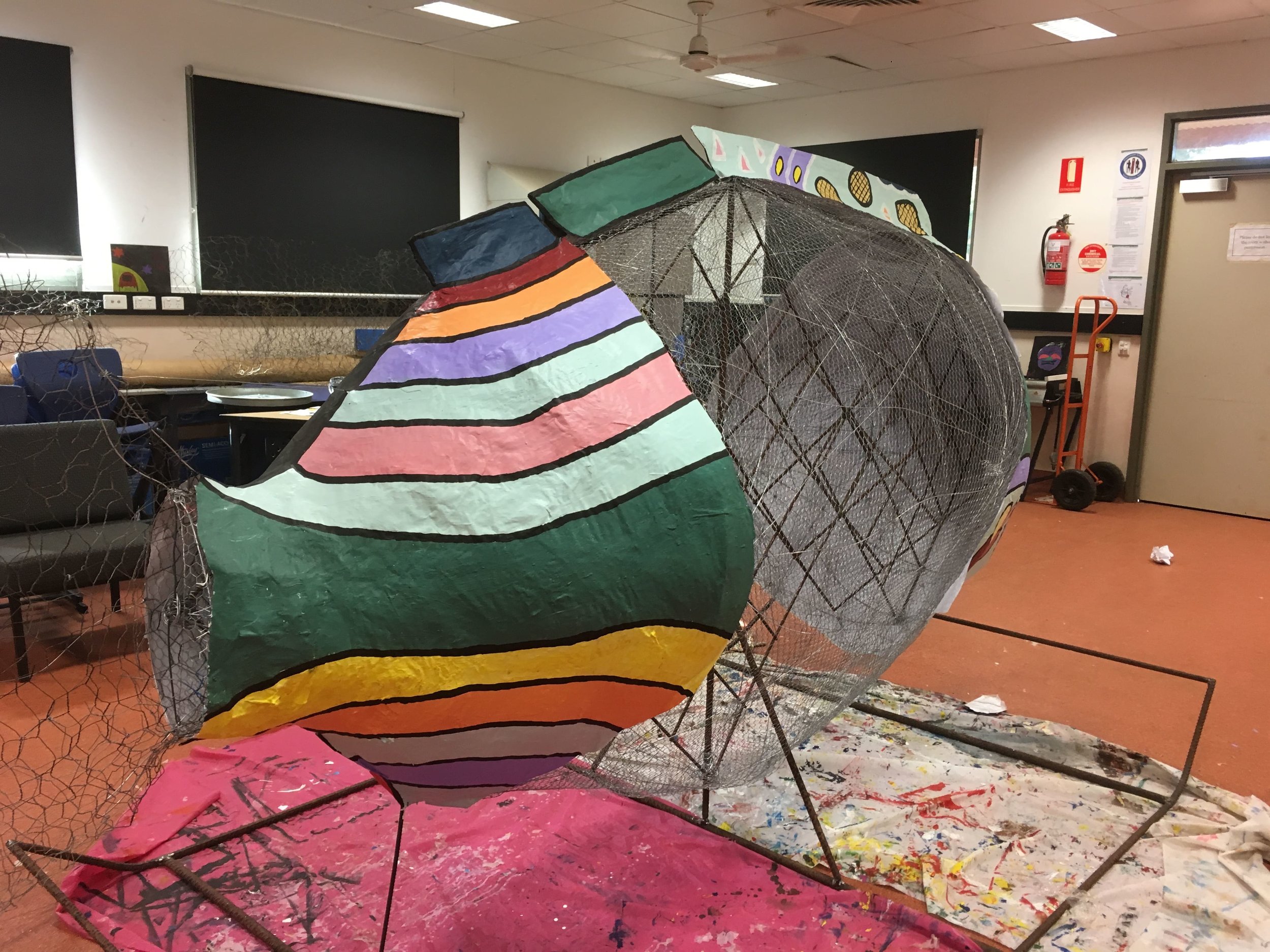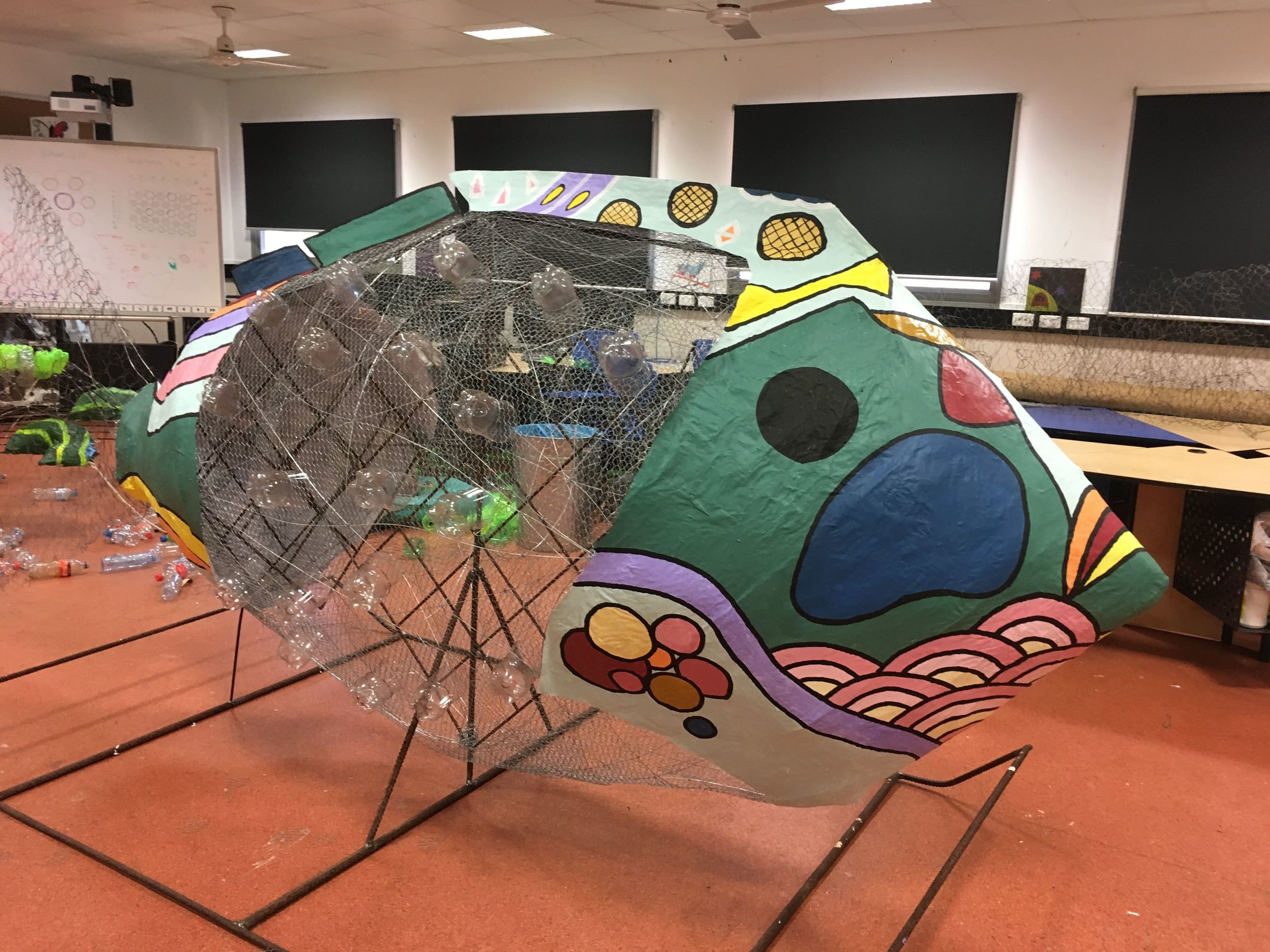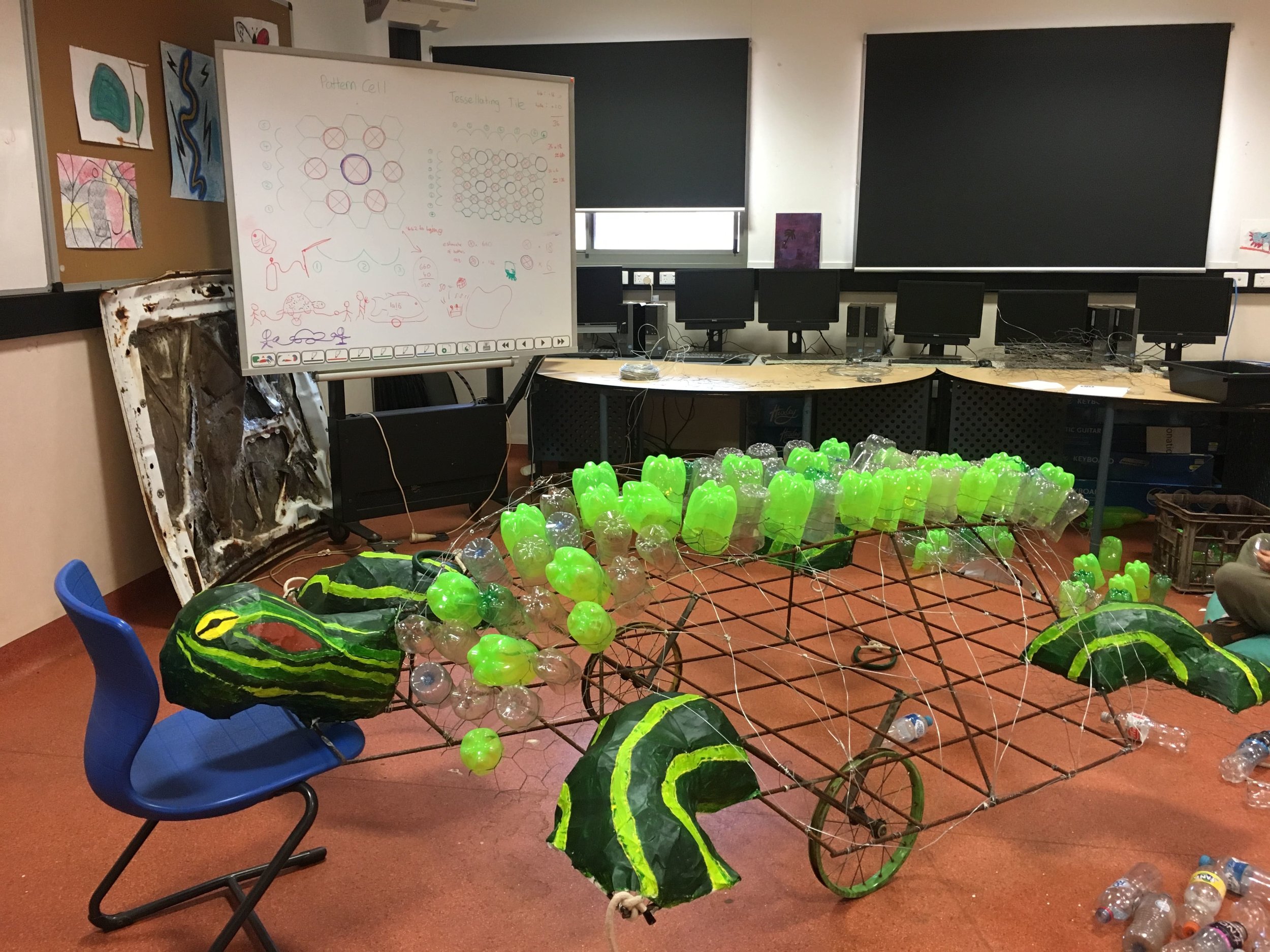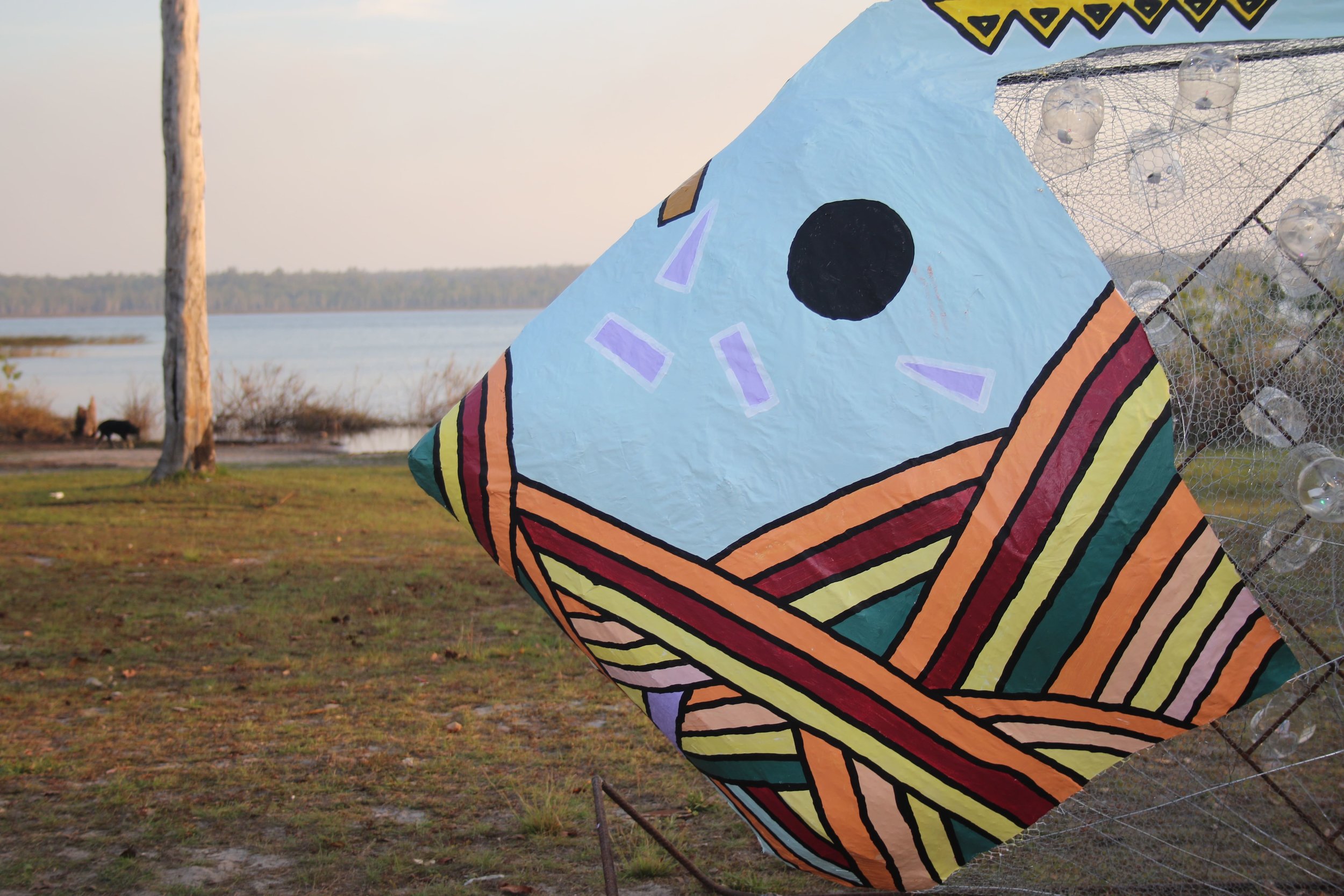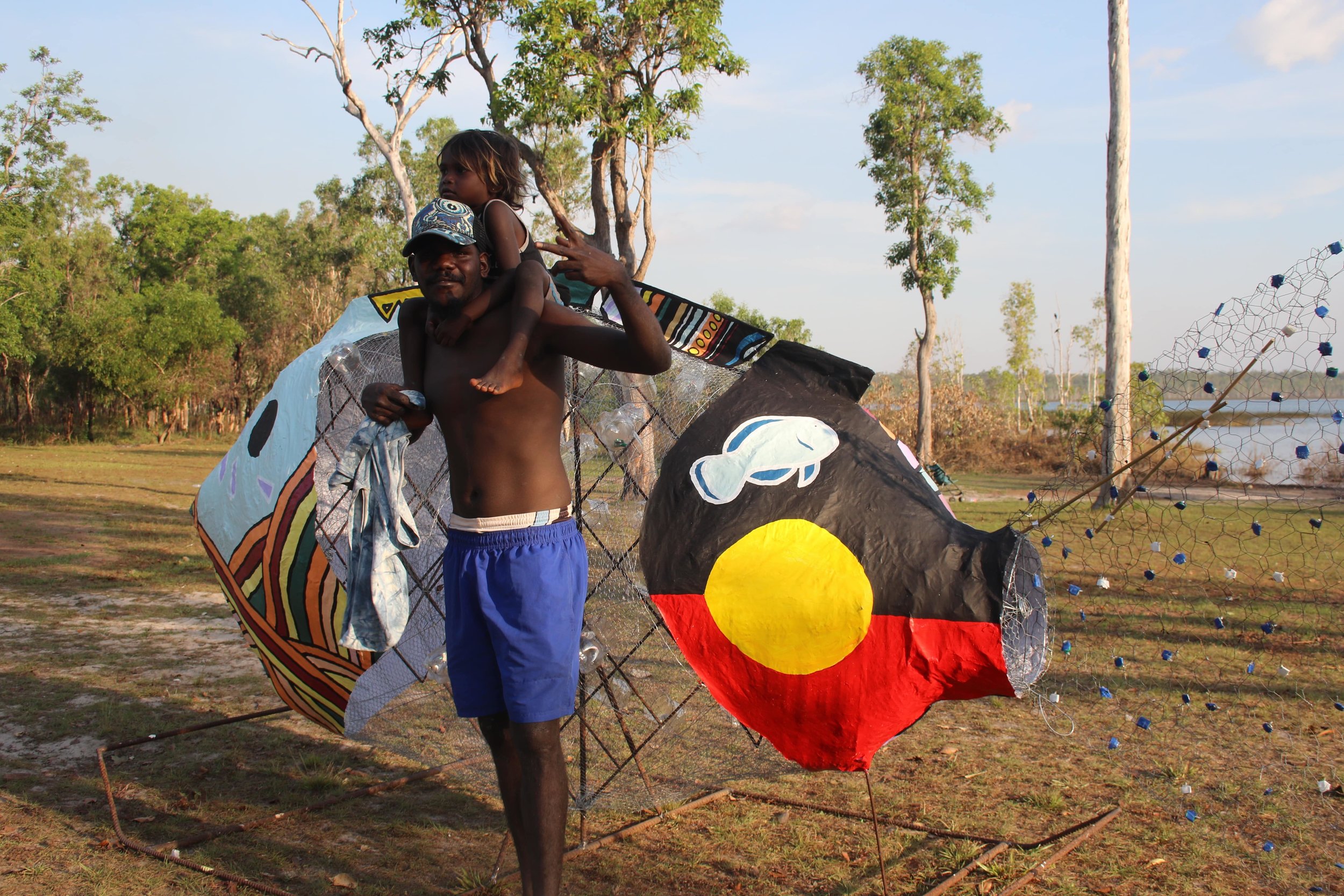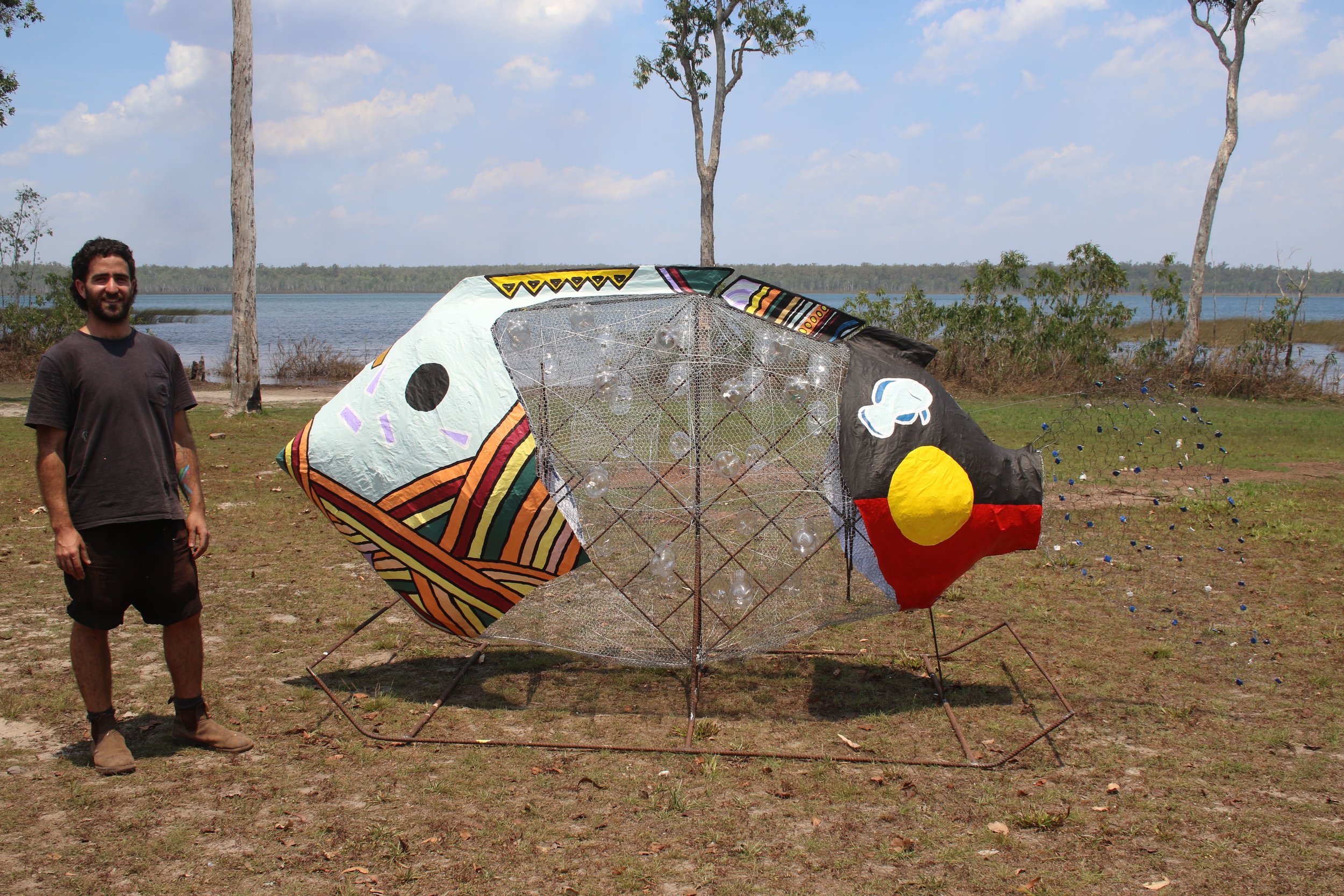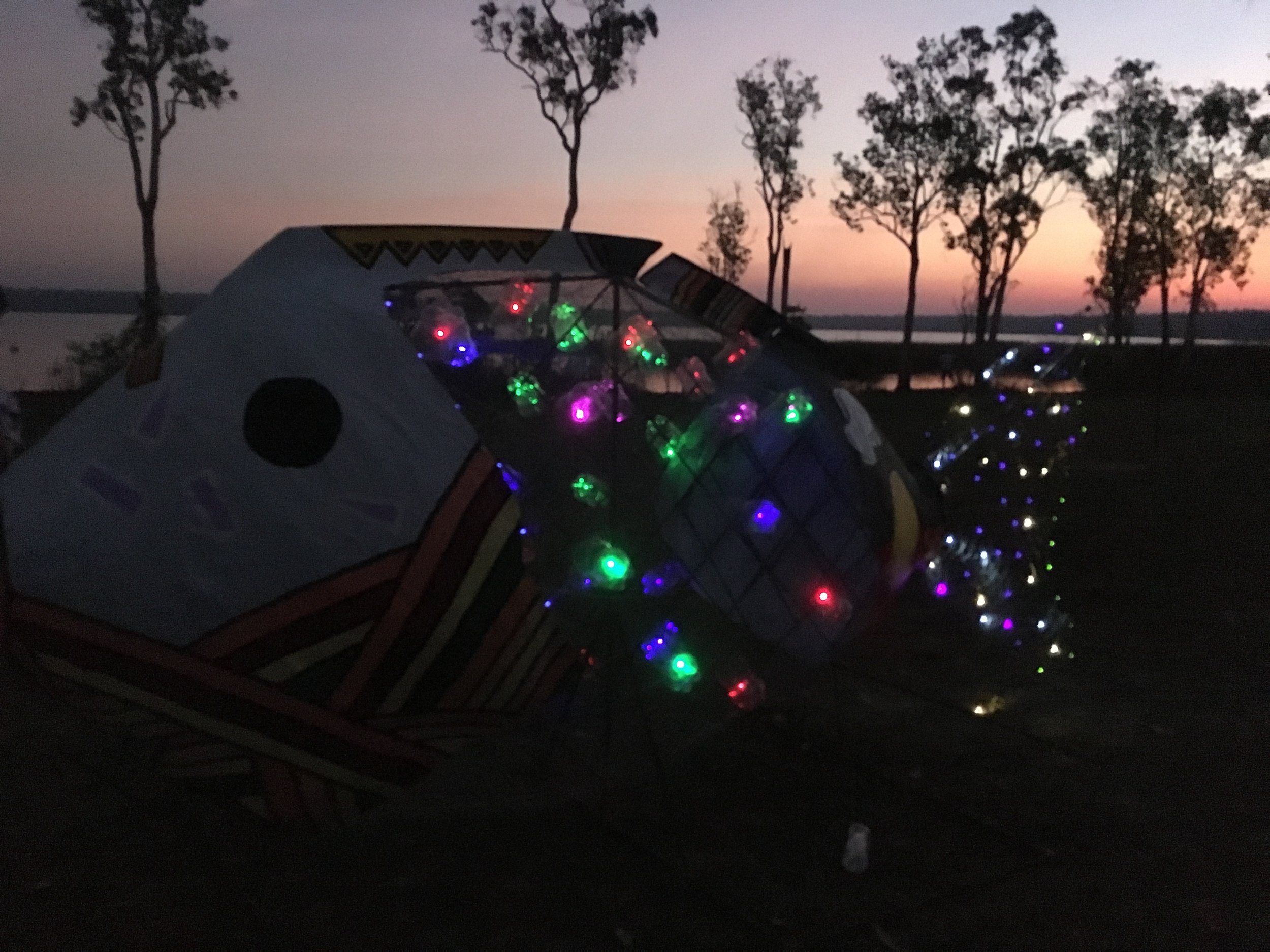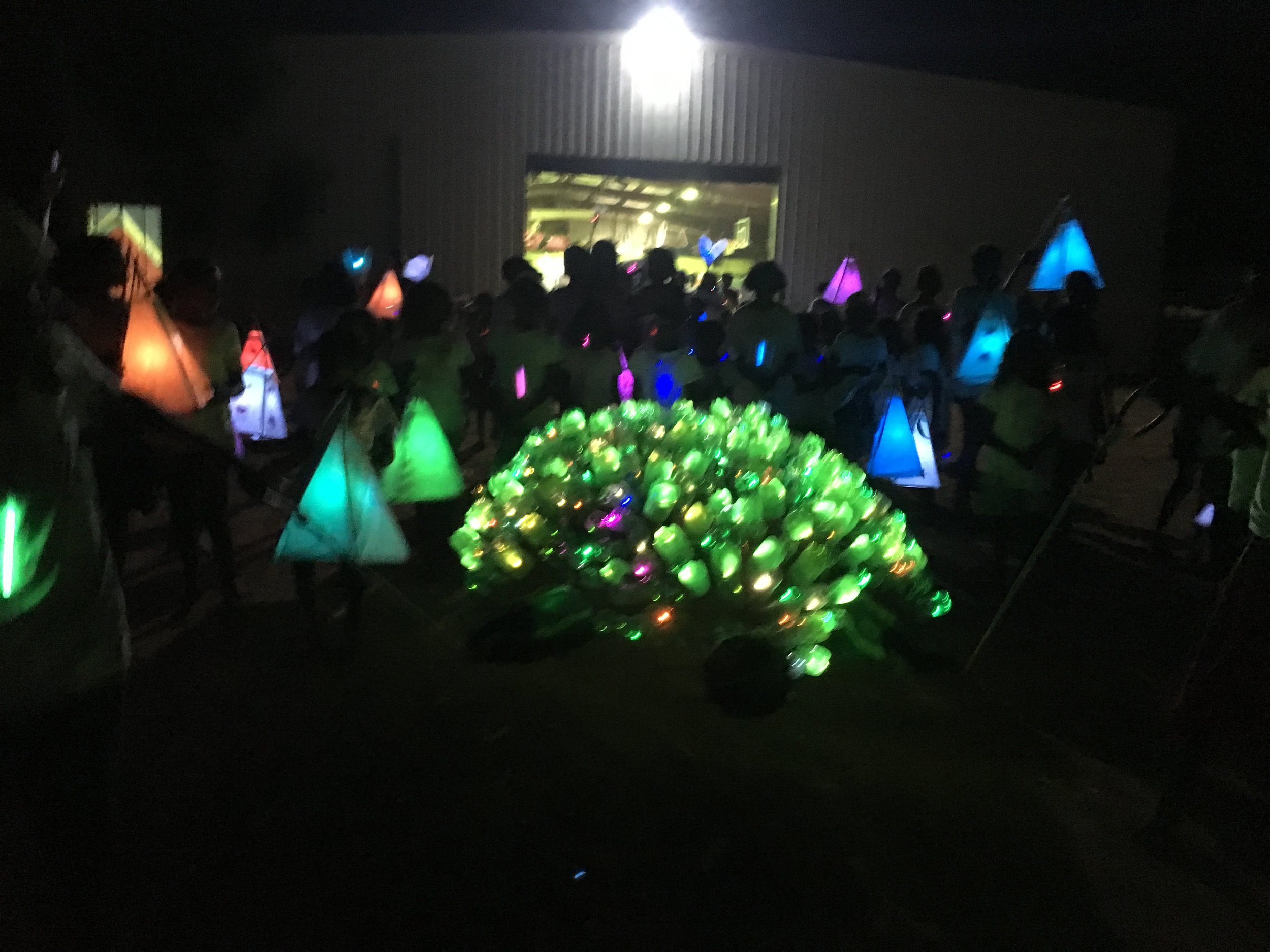Gapuwiyak Trash Sculpture - Project Journal
Overview
This project was completed over 6 weeks with kids from years 5 to 10 in the remote Indigenous community of Gapuwiyak, Arnhem Land, NT. The aims of the project included:
Create a meaningful artwork for an upcoming town festival & moonlight parade that all students and staff could contribute to.
Provide students with a project based learning experience that integrated applied educational content.
Address the critical issue of litter and plastic waste for the future health of the community.
The project was coordinated and facilitated by Daniel Silver and Mahra Villis, with help from various teachers and staff at Gapuwiyak School. A huge thank you to everyone who participated and made it possible.
Phase 1: Recycling
In the first phase of the project we introduced students to the idea of building something cool out of all of the plastic bottles littered around town. We invited students to vote on what to make. They chose a turtle and a fish. Then we described the design process that would be undertaken. First we’d need to collect bottles; so we got out some wheelbarrows and a loudspeaker and cruised around town with some music, collecting all the bottles and lids we could find - and attracting some welcome attention. Back at school we set up a pop-up recycling plant with cleaning and organising stations to prepare the bottles for making.
Phase 2: Manufacturing
To make the sculpture frames we enlisted the help of a local group of makers called the Buffalo Boys. They learn trade related skills as part of a community development program and helped out with metalwork as well as providing scrap rebar from their workshop. We took a group of the kids to visit and learn about what they do. It was a great opportunity for the kids to add an item to their list of possible future directions for vocational training. And it was a way to involve more of the community in the project. While the Buffalo Boys were making the frames we got the students started on a simple making process with the bottles - making plastic flowers for the festival parade.
Phase 3: Construction, Ecology & STEM
During phase three of the project we began building the wire sub-structures that would become the shapes for the fish and the turtle on the welded frames. It was intricate work and only the older students helped. The younger students visited to check on progress and in weekly workshops we told ecological stories about fish and turtles to ground the process in cultural and ecological knowledge. Kids made turtle puppets and landscapes and played out the seasonal activities of the turtles. There was also an opportunity to involve some applied maths and geometry for senior students to work out how many bottles we would need to cover the turtle’s shell and to see organic geometry in 3D.
Phase 4: Painting
For the painting phase we first covered the sculptures in two layers of paper mache. Then students created designs for the paintwork on the fish and from their ideas I created a composite design. For the turtle Mahra created a design inspired by real life. We mixed the colours and together with students and staff painted the sculptures, which were finished with some pinstripe detailing.
Phase 5: Bottles & Lights
The turtle shell was created my Mahra using a piece of salvaged fence. Into which we stuck as many bottles as we could manage.
The lighting system we used was easy for the kids to play with and an opportunity to involve some more STEM learning of simple circuits. Every student had an opportunity to make a light using an LED diode and a coin cell battery, to fasten the light to a bottle and to add the bottle to one of the sculptures and one of the flowers. So that the lighting of the works was done by every pair of hands.
During this part of the process we introduced simple circuitry and concepts relating to electrical energy with each of the classes.
Phase 6: Festival
On the day of the festival the fish sculpture rested near the stage and was well received by the whole community. The turtle a lantern parade organised by the local art centre, alongside the flowers from phase 2 and lanterns made by some other community artists who were in town at the time. It was a really special occasion, the first festival in Gapuwiyak since its establishment.
